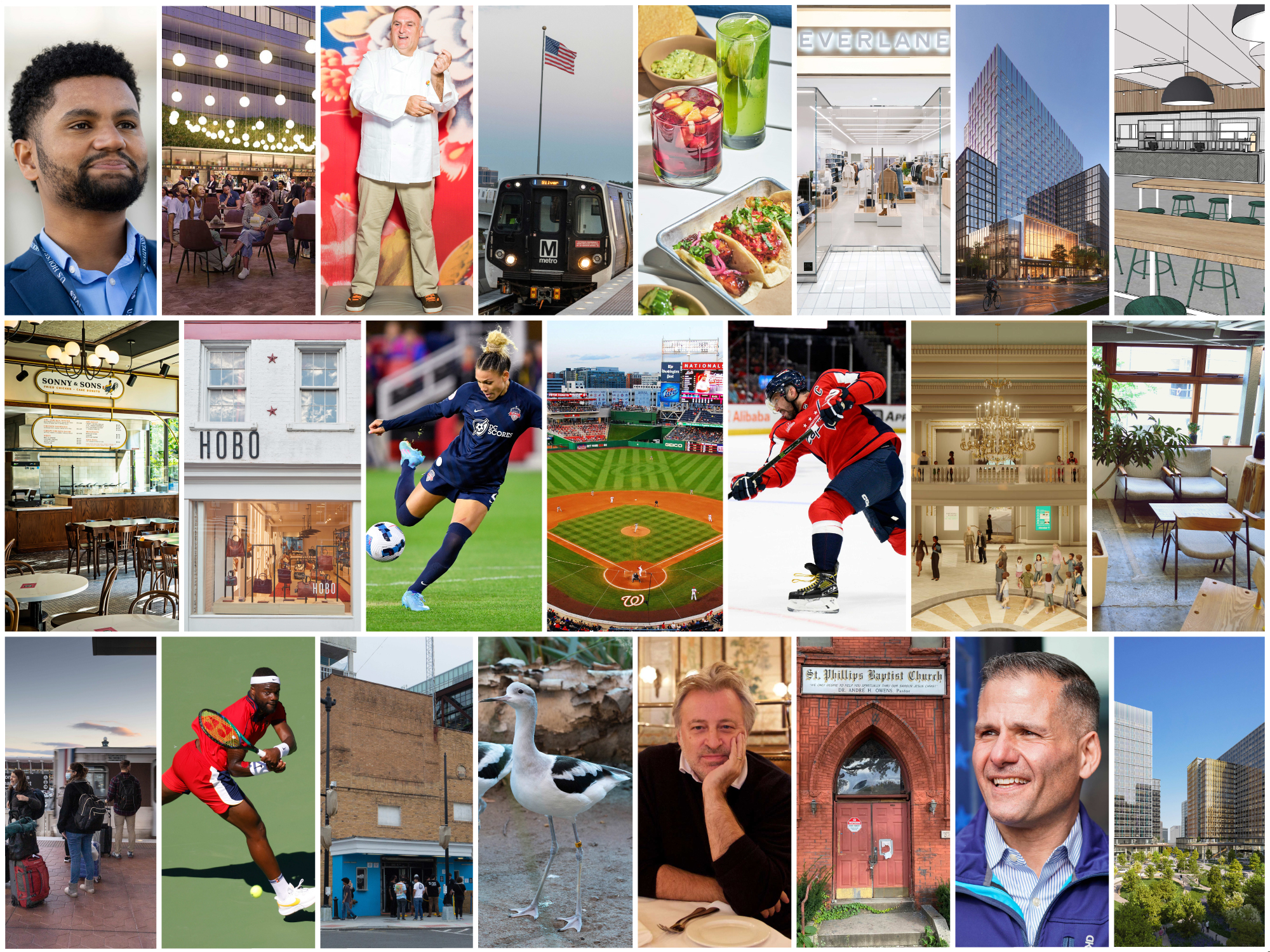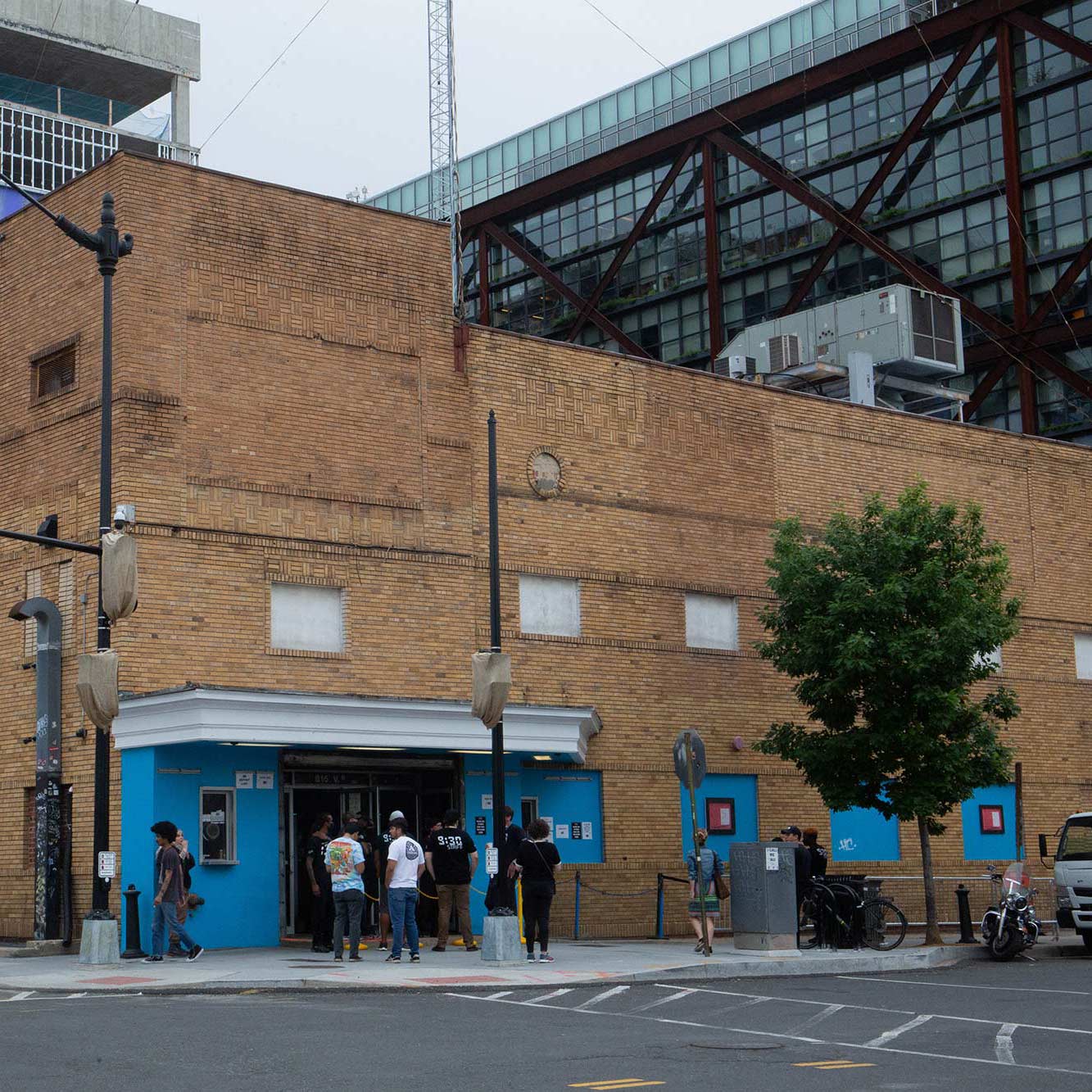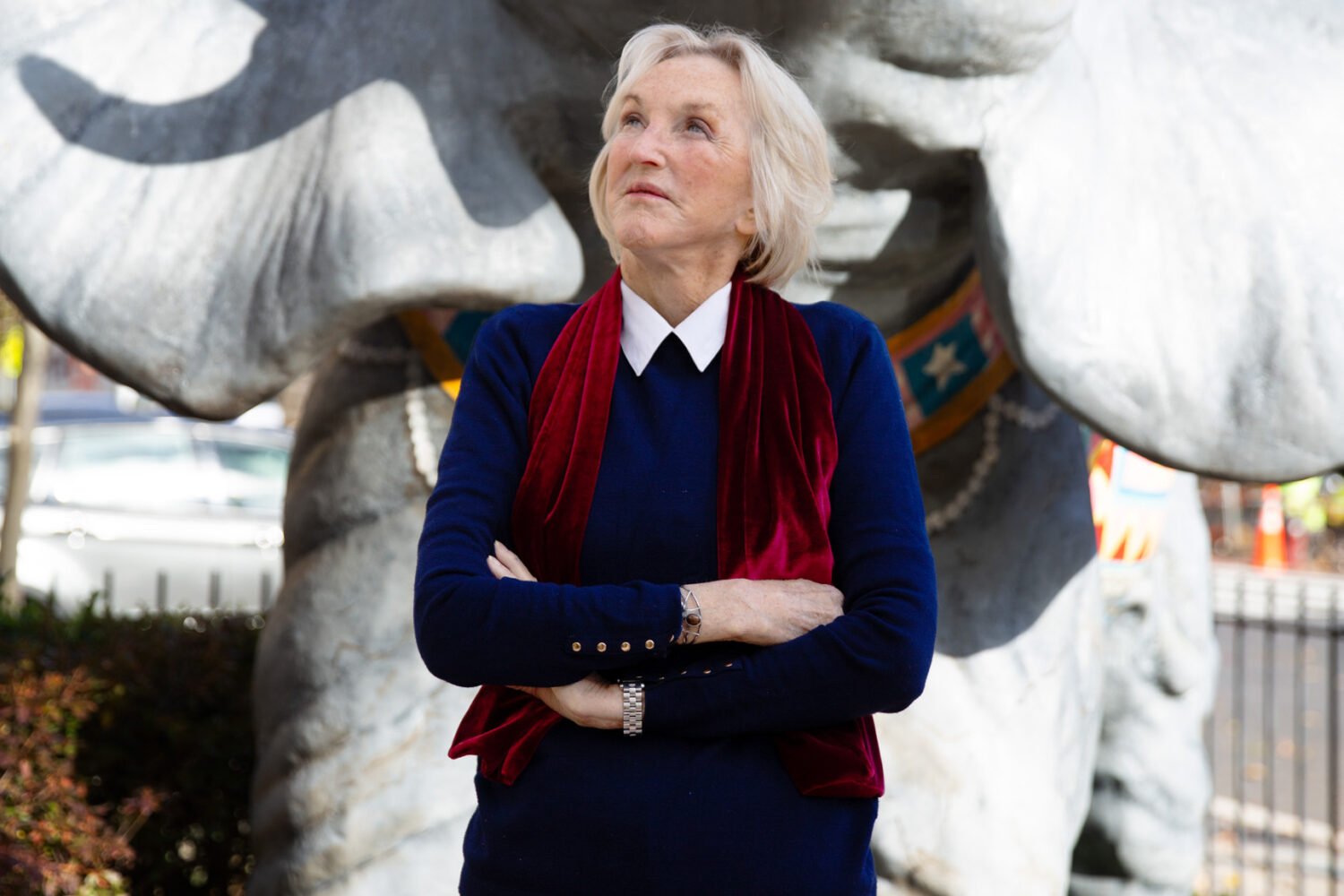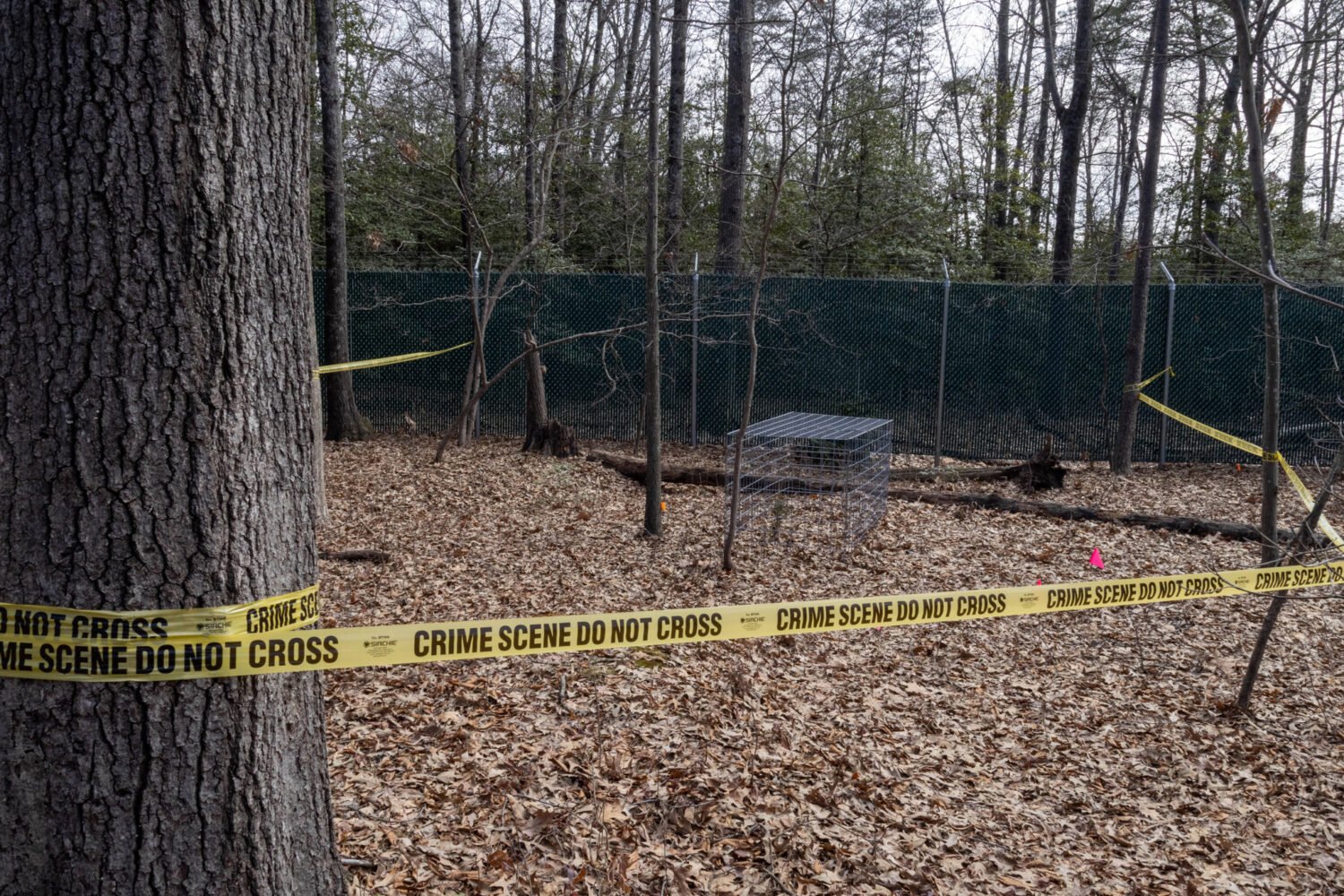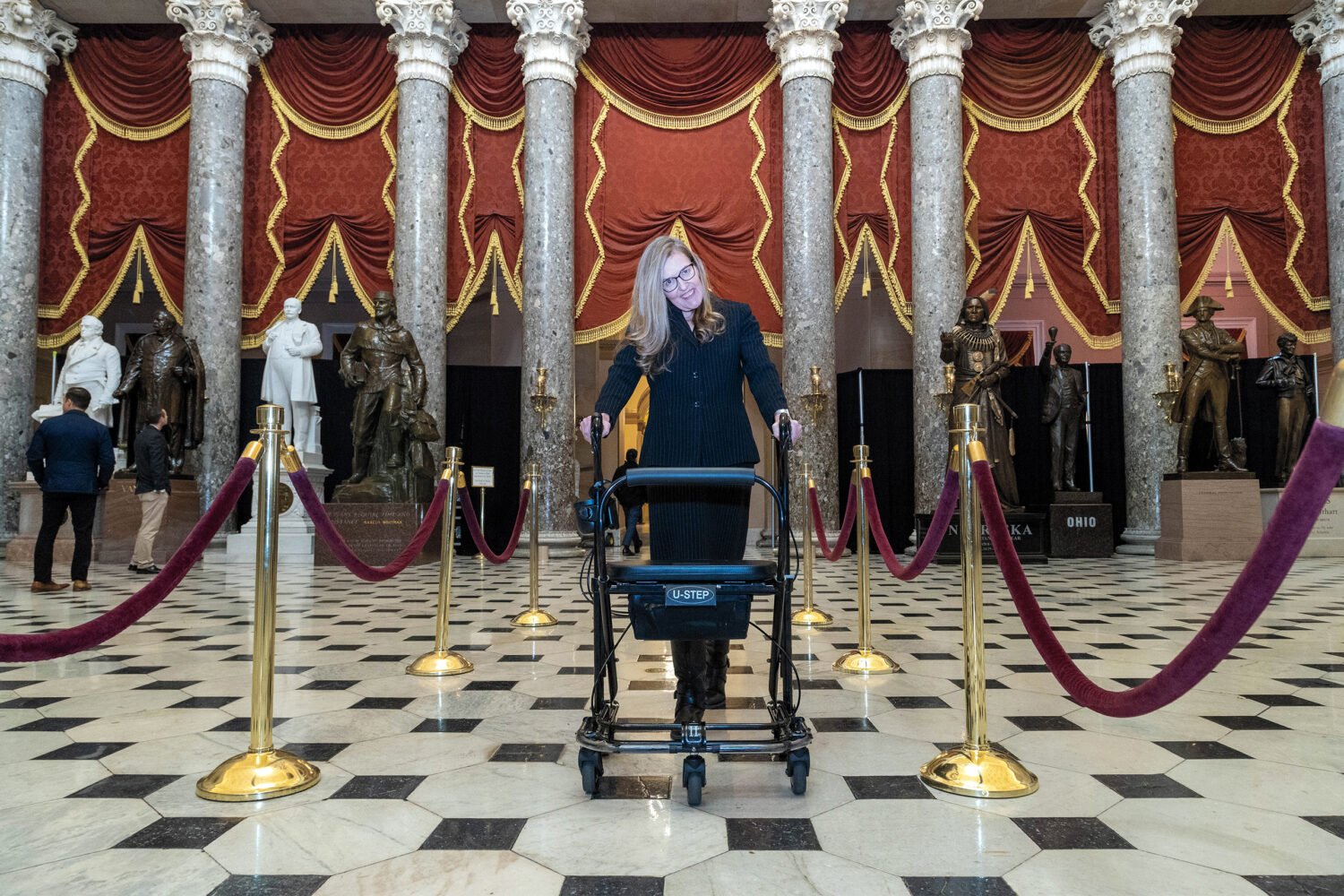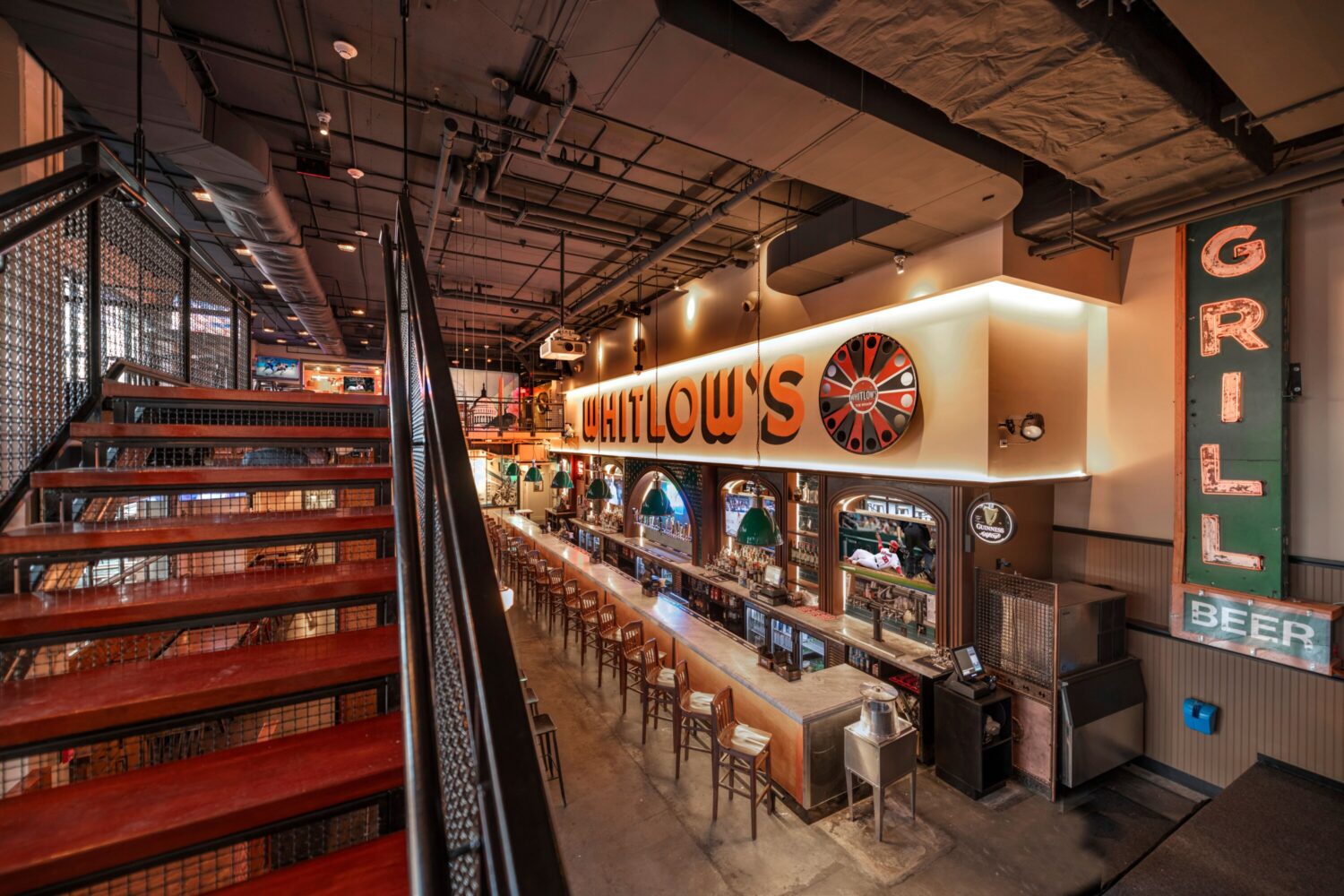Contents
- José Andrés is Getting the Last Word
- Food Halls, Our New Laboratories Of Gastronomy
- Dulles is Only a Metro Ride Away
- New Year, New Office
- “Mall Culture” Is Back (Sort Of)
- There Are Reasons to Cheer That Are Already Here
- The Nats and the Commanders May Soon Have New Owners
- Amazon’s HQ2 Is Opening for Business
- The DC Waterfront is Awash in New Reasons to Visit
- All-Glowed-Up Renovations
- The National Zoo’s Reimagined Bird House
- Don’t Call It a Comeback
- Fresh Faces
- Rude VIP Diners Will Have to Clean Up Their Acts
- Three Things We’re Not Excited About
José Andrés is Getting the Last Word
He’s opening a new restaurant in the former Trump hotel
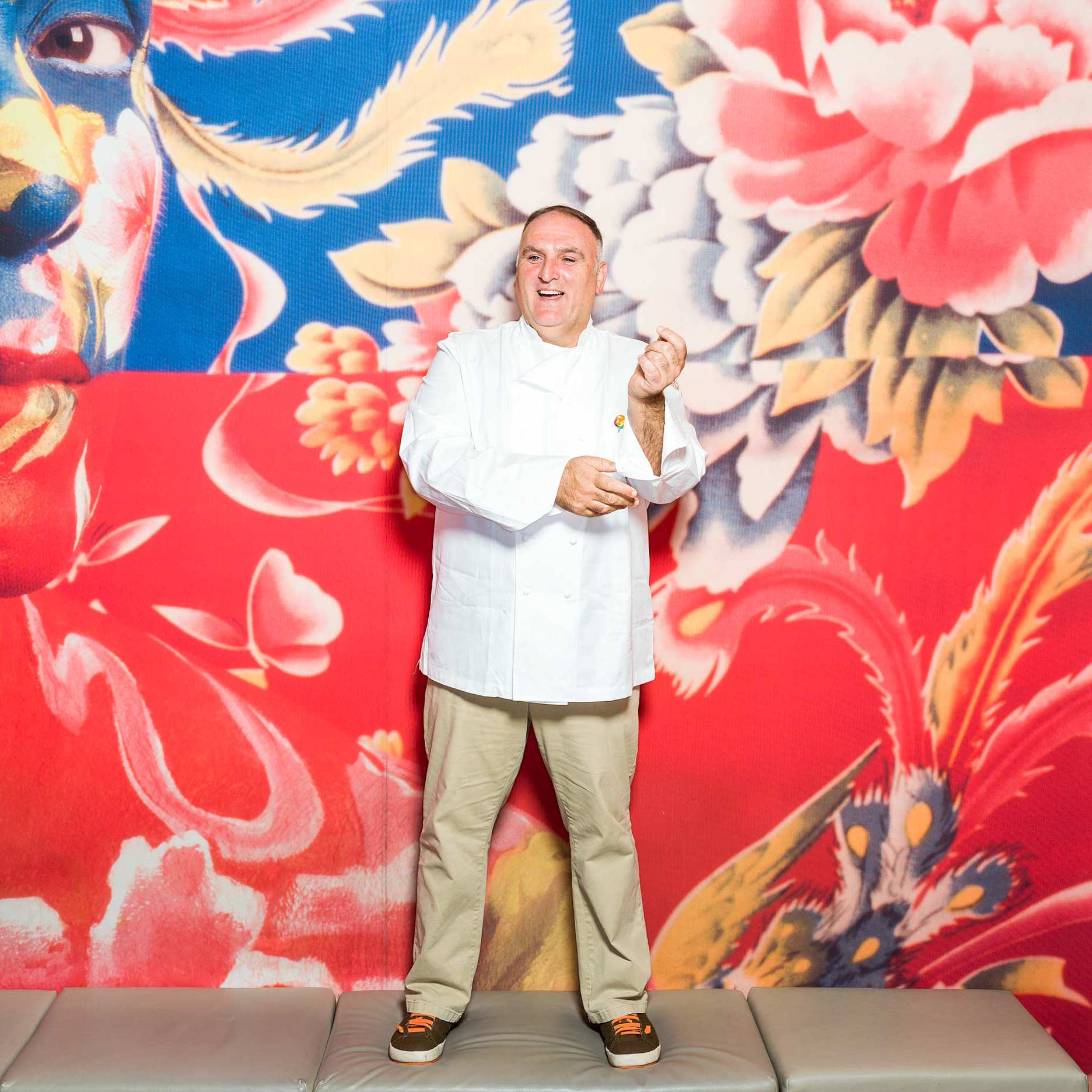
José Andrés was poised to launch his splashiest restaurant yet in the Trump International hotel. Then in 2015, Donald Trump announced his bid for President with incendiary remarks about Mexican immigrants, and Andrés backed out of the deal. The two sides sued each other (and ultimately settled). A steakhouse moved in. The place became a magnet for MAGA red-hatters and the right-wing elite.
Flash-forward: Andrés has blown up into a superstar celebrity and humanitarian, popping up at seemingly every major global crisis ready to feed those in need. Meanwhile, Trump, more divisive than ever, has moved out of the White House and sold off his once-prized hotel lease to Waldorf Astoria. Now everything is coming full circle: Andrés will return to the Pennsylvania Avenue property to open the Bazaar, an avant-garde fine-dining restaurant celebrating his Spanish roots.
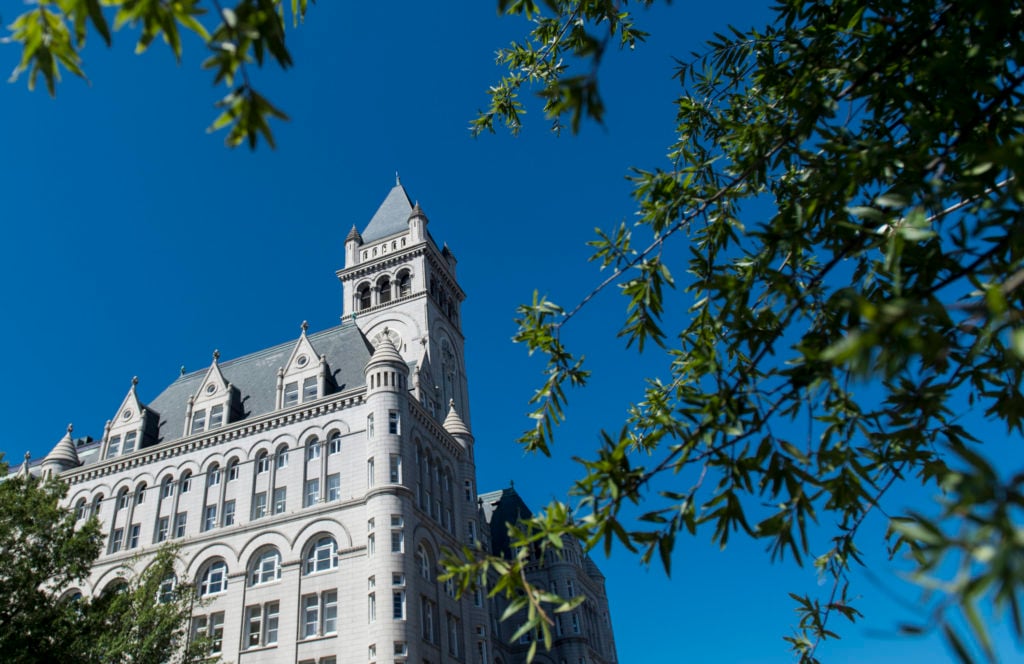
He calls the project a “longtime dream” dating to 1993, when he apparently first set eyes on the Old Post Office. You could also call it a return to relative normalcy after the chaos and controversy that consumed DC in the Trump era. We, however, prefer to call the move what it really is: sweet revenge.
—Jessica Sidman
Food Halls, Our New Laboratories Of Gastronomy
Look to several new ones to discover up-and-coming culinary talent
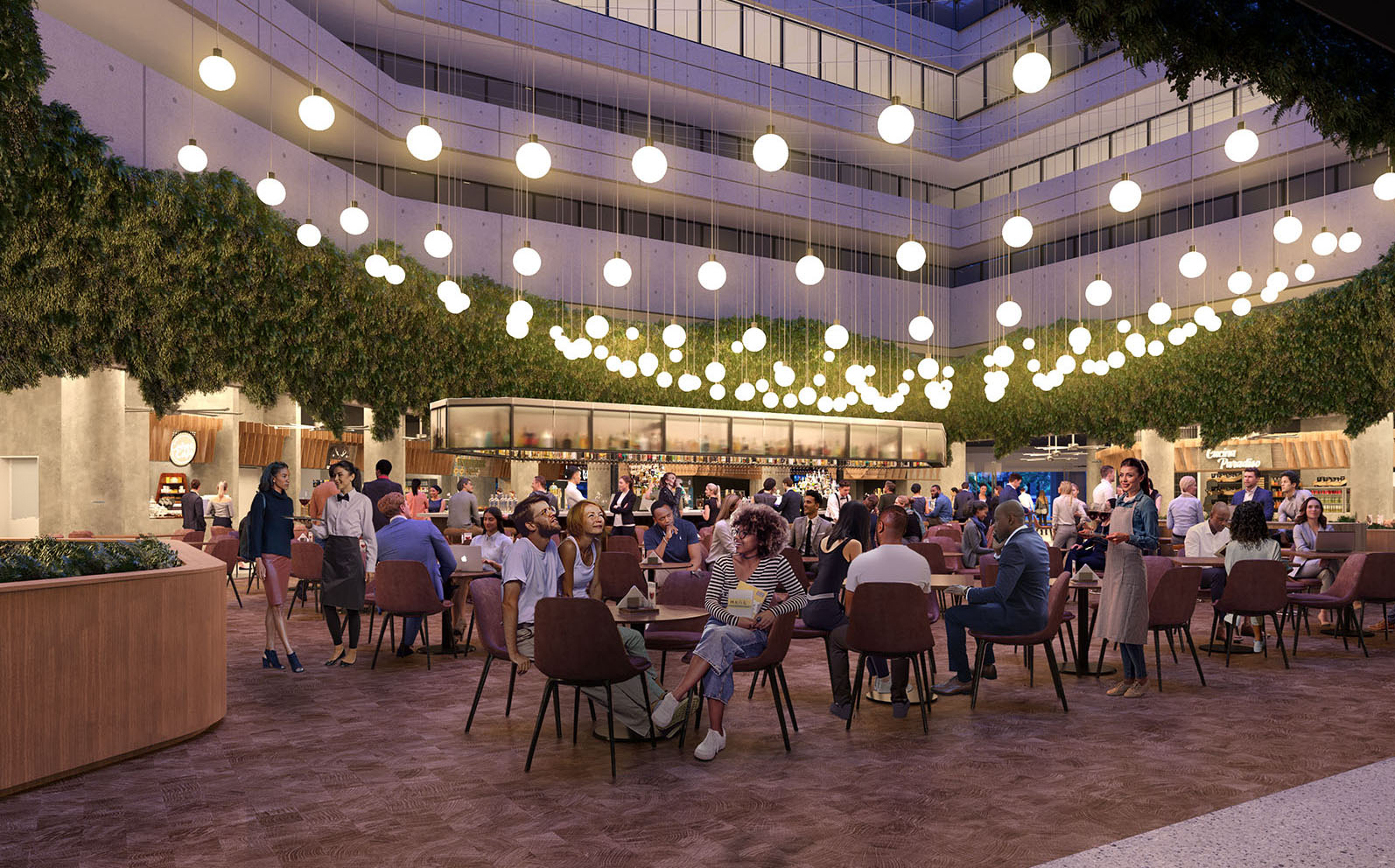
If you scan the list of restaurant openings slated for 2023, you’ll see some familiar names. Boldface out-of-towner chefs and restaurateurs, including Gordon Ramsay, Tom Colicchio, and Philippe Chow, have turned their interest back to Washington. Big local groups—led by the folks behind All-Purpose Pizzeria, the Salt Line, and Taco Bamba—all have spinoffs in the works. Local and national chains are multiplying in droves. In other words, this does not look like the year of the scrappy, risk-taking indie chef.
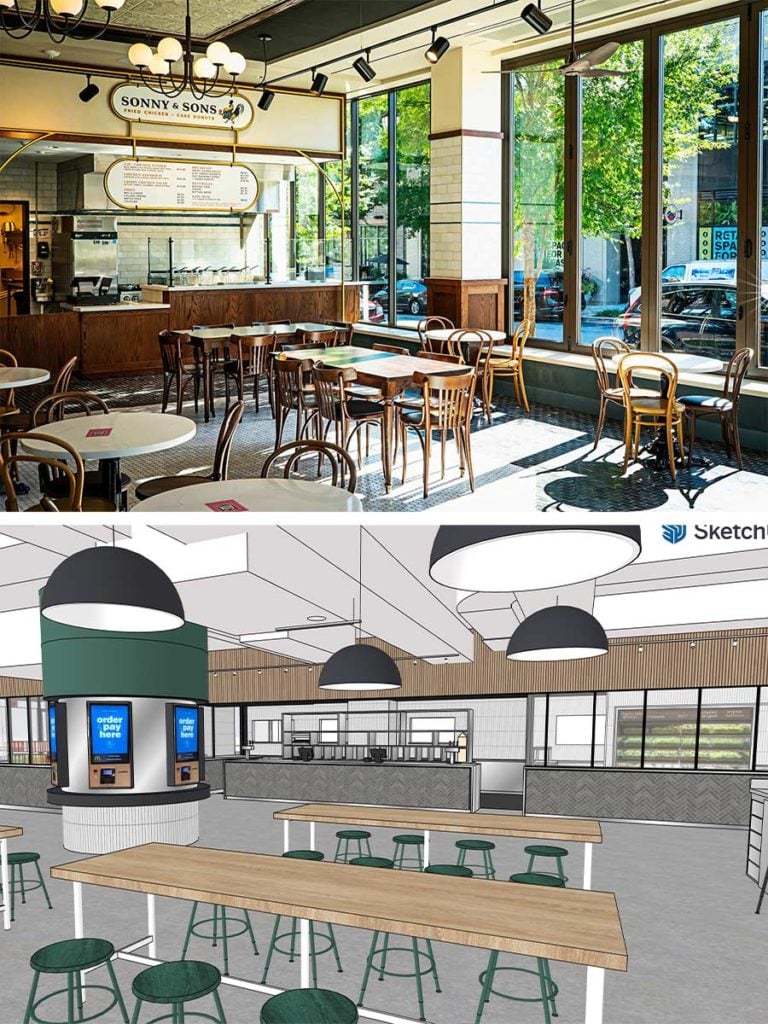
But for up-and-comers who are long on ingenuity and short on cash, there’s a workaround: the food hall. These market-like eateries let culinary innovators take chances on temporary concepts and try offbeat ideas without having to appease risk-averse investors or commit to crushingly high rents. We’re already fans of the four-month-old Riverdale Park food hall Le Fantome, where first-time entrepreneur Kareem Queeman—a.k.a. Mr. Bake—is serving some of the area’s best banana pudding. Several more food halls are on the way in 2023, including Love, Makoto, the Japanese emporium near Judiciary Square; Commas, a 12-vendor startup in Silver Spring; and the diverse Heights in Friendship Heights. The biggest, though, is the sprawling Square in downtown DC, slated for a midyear opening. Its cofounder is an up-and-comer himself: former José Andrés protégé Rubén García.
Who knows? The next megastar chef could be toiling behind one of his counters.
—Ann Limpert
Dulles is Only a Metro Ride Away
Thanks to the Silver Line extension, your travels in 2023 may be easier and cheaper
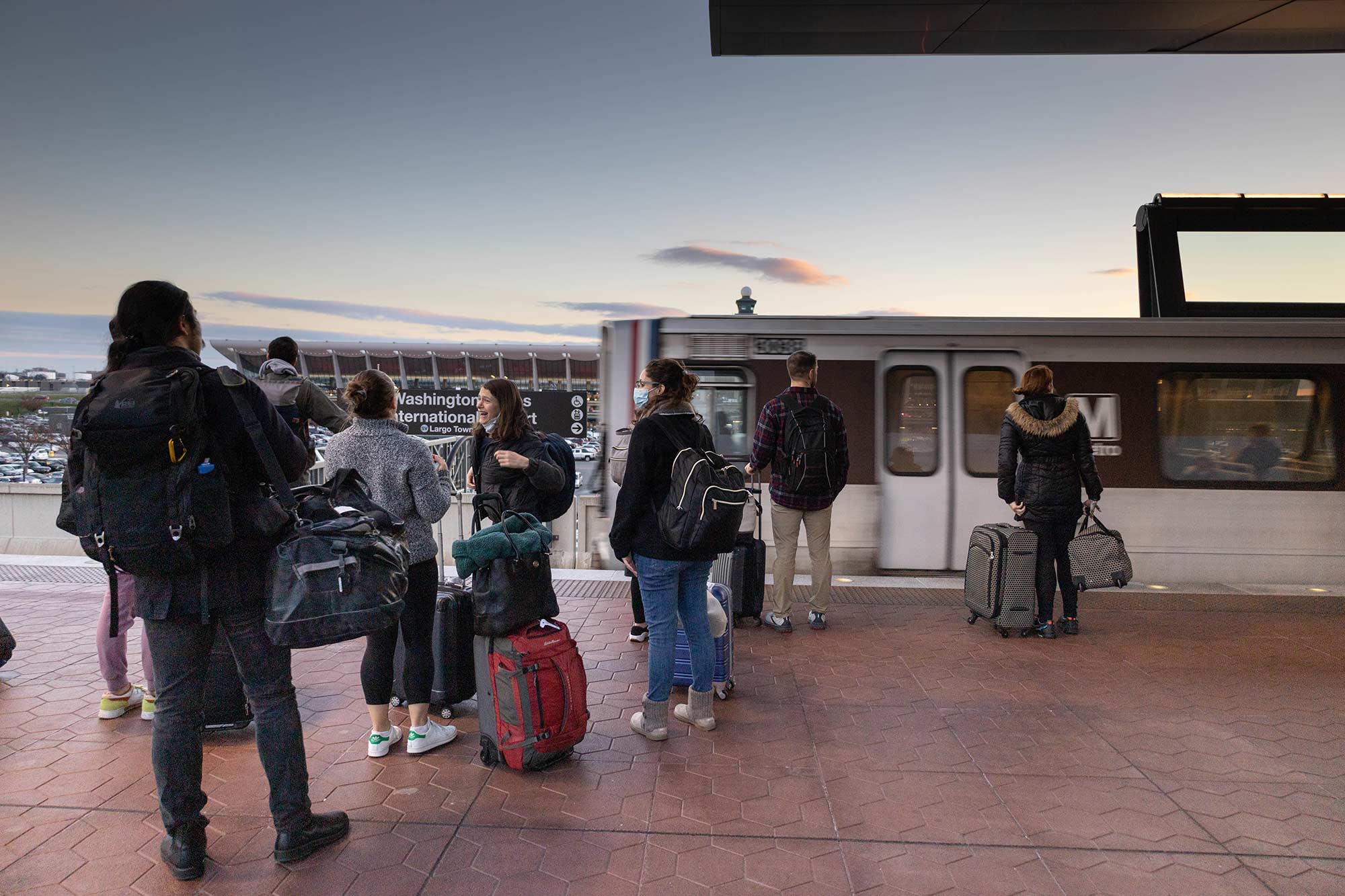
One of the most exciting additions to Washington life is something that people in lots of other cities take for granted: public transportation to the airport. The Silver Line’s extension to Dulles opened November 15, finally giving Washingtonians a cheap—the maximum fare is $6!—and car-free way to trek to the region’s second-busiest airport. How will that change your 2023? On a recent morning, Washingtonian tested the ride.
|
9:43. We enter Metro Center. Uber wants $57.93 for a 39-minute ride to Dulles from this location, and Lyft wants $47.04. We pass the faregates and, after a seven-minute wait, board a Silver Line train to Ashburn. About 20 people are on the car, and none have roll-aboard suitcases. We don’t mind because we are living in the future, or at least in the ’60s jet age that architect Eero Saarinen envisioned when he designed an airport where people wouldn’t have to walk far to their planes. |
|
9:59. We arrive at Rosslyn, our first stop in Virginia. |
|
10:09. We’re out in the light, trundling along I-66 and losing the race to cars along the uncharacteristically uncongested highway. |
|
10:19. We begin to travel along the Dulles Access Road. Our speedometer app shows we’re traveling at 56 mph. We briefly overtake a Chevy Equinox. |
|
10:23. Tiaras on buildings and giant car-dealership flags—ladies and gentlemen, we have entered Tysons. A prominent Washington Post Express–branded newspaper recycling bin greets us at the Greensboro station—hmm, the future looks suspiciously like 19 years ago. |
|
10:31. We begin to slow to around 22 mph, and every vehicle on the access road takes this as a cue to smoke us. Soon the train is hitting only 13 mph. Gentrified strips of forest interrupt the concrete canyon of our view. |
|
10:47. Reston Town Center. We’re officially on the extension. Familiar names appear less regularly on buildings, replaced with ones we sort of recognize from sports radio: Iron Bow! Mantech! Noblis! |
|
10:55. The first signals that we’re close: The bizarre CIT building appears, then signs for rental-car return. What’s the deal with that lake, anyway? Two minutes later, we see Saarinen’s beautiful terminal building, which still feels like an anchor tenant for a future that never quite materialized. Four people are on the train. |
|
10:58. Three of us detrain. Washingtonian’s trip took an hour and eight minutes and cost $3.85—take that, Uber! After a five-minute stroll through the covered pedestrian tunnel (which involves three moving walkways and one exhibit about the Hubble Space Telescope), we’re at the baggage-claim level. |
|
11:08. On our return journey, we discover that the Metro escalator is out of service (good thing we don’t have luggage) and the next train east will take 22 minutes to arrive. Maybe the future still has some kinks to work out. |
—Andrew Beaujon
New Year, New Office
Turns out there is such a thing as a free lunch—and that’s just the start of it
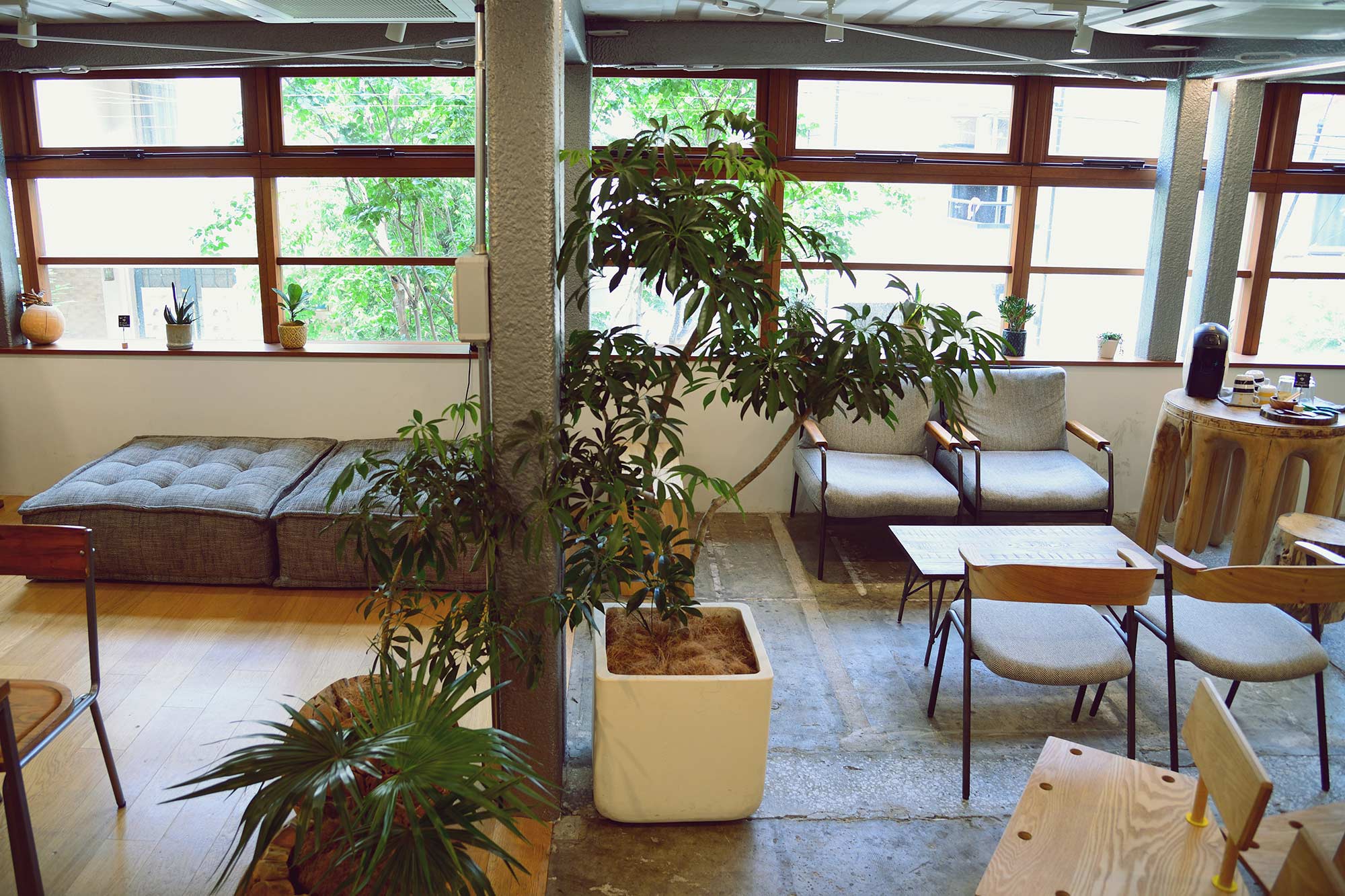
Last fall, many companies finally called workers back to the office—for real this time. Of course, after tasting WFH life, a lot of people simply don’t want to return to the 9-to-5 desk grind. So companies are coaxing them back with all the perks. What could you see in your workplace come 2023? Check it out:
Nicer Offices
Some 73 percent of companies that changed DC-area offices between July 2020 and July 2022 moved into a higher-quality building, according to data from the commercial real-estate company CBRE. Groups are upgrading facilities to be more hospitality-focused, with cozy hangout areas. Add-ons such as rooftop decks, outdoor space, fitness centers, and yoga rooms are no longer nice-to-haves—they’re sometimes seen as musts for getting bodies back in.
Elevated Perks
Free parking and lunches, flexible hours, bougie corporate events, and ditching suits for jeans? These are all tactics local companies have employed to get peeps in seats. (Office developers are getting in on the trend, too—the Herald, a building in downtown DC, even has doormen and an in-house Tesla.) Fingers crossed that these continue in 2023—word is we might even see in-office doggie daycares.
Better Locations
Mixed-use developments à la the Wharf were already a thing pre-Covid, but they’re apparently even more important now. Some companies are forgoing traditional downtown offices for spots in live/work/play environments. (Think TikTok’s Union Market office.) Because rolling out of bed and walking downstairs > a 40-minute Metro commute.
—Mimi Montgomery
“Mall Culture” Is Back (Sort Of)
Like to shop in actual stores? You’ve got a lot of new options—with more on the way.
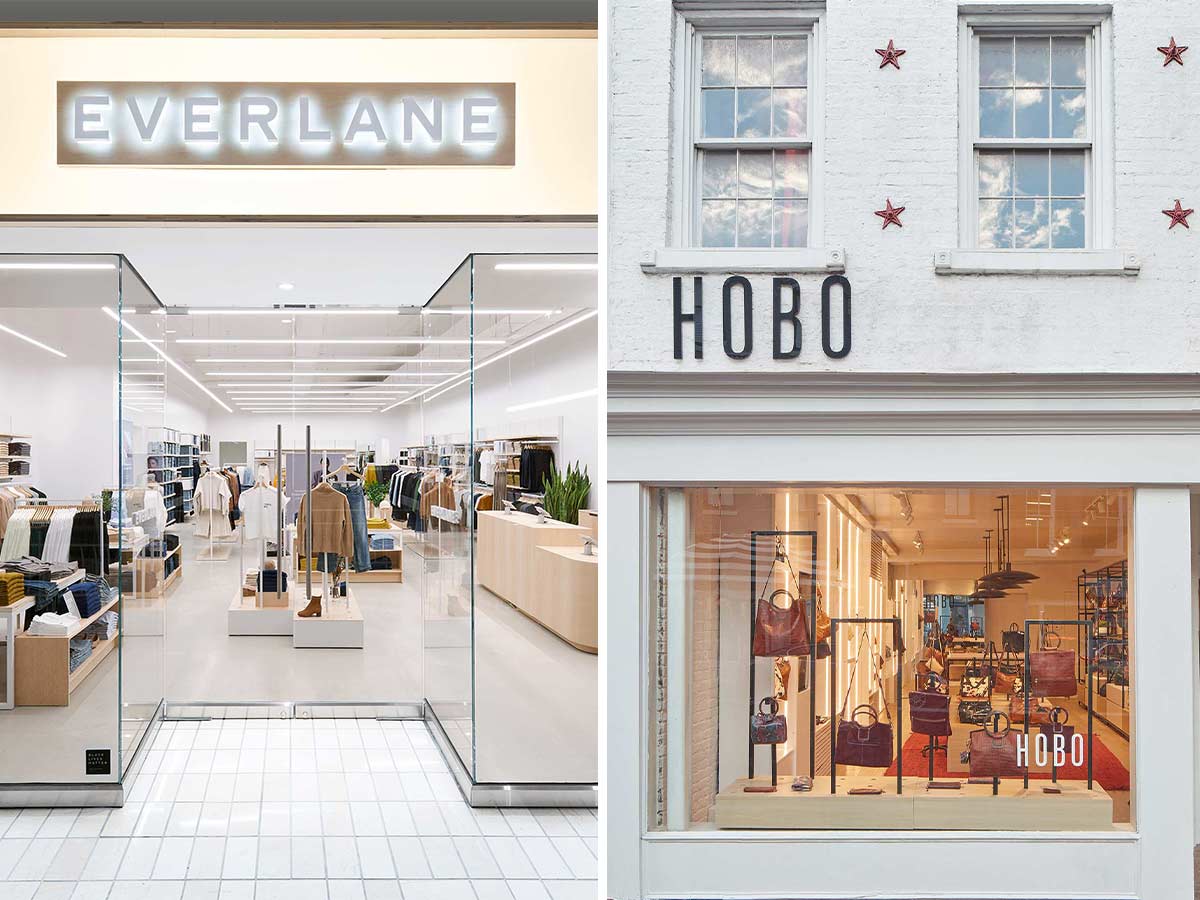
When plans were finally unveiled last year to turn Mazza Gallerie—the once-busy shopping mall whose heyday had passed—into apartments, it was yet another blow to mall culture. Online shopping had long threatened malls, and the accelerated pace during the pandemic couldn’t have helped brick-and-mortar retail.
And yet.
Fast-forward to last year, when the Washington area got a slew of new shops, including some big names: beauty brand Glossier and leather-goods purveyor Hobo in Georgetown, designers Akris and Brioni in CityCenterDC, men’s and women’s fashion brand Everlane in Tysons, and Madewell, among others, on Bethesda Row. Maybe that shop-till-you-drop vibe of the ’90s wasn’t dead, nor being able to walk from store to store—often, sure, in a shopping district, not always a mall, but why quibble?
This year, the openings continue: CityCenterDC will welcome a Christian Louboutin shoe mecca, among other boutiques; Tysons Galleria is getting a Dior and—watch lovers, rejoice—a Panerai, an IWC, and a Breitling. The Instagram-popular jewelry line Mejuri and women’s clothier Anine Bing will open in Bethesda Row, and more to-be-announced stores are coming to Tysons. We can see the ’90s-movie shopping montages replaying now.
In addition to openings, there are expansions: Chanel and Saint Laurent in Tysons and Louis Vuitton in CityCenterDC are all planning to grow. The combination of new stores and expansions has us optimistic about what other big (and little) brands will move in next.
Not convinced we’re all a little nostalgic about mall culture? It can’t be just a coincidence that also currently booming are next-generation food courts—a.k.a. food halls.
—Amy Moeller
There Are Reasons to Cheer That Are Already Here
While the Nats and Commanders work through their issues, local fans have other sources of excitement this year

Lifted Spirits
Following a bitter ownership battle, off-field controversy, and a subpar season, the 2021 National Women’s Soccer League champion Washington Spirit are looking to bounce back behind 20-year-old star forward Trinity Rodman—the youngest nominee for last year’s Ballon d’Or award, given annually to the best soccer player in the world.

Homecoming King
Francis Tiafoe—who learned tennis at a College Park training center where his immigrant father was head of maintenance—broke through last season by defeating Rafa Nadal en route to the US Open semifinals. He’ll return to the Citi Open in August with a strong chance to win it.

Chasing Greatness
Capitals star Alex Ovechkin continues to close in on Wayne Gretzky’s NHL career record of 894 goals. If he breaks the Great One’s long-untouchable mark, it likely won’t happen until the 2024–25 or 2025–26 season—but every step on the way is worth savoring
—Patrick Hruby
The Nats and the Commanders May Soon Have New Owners
And that has sports fans in this town already dreaming of better days to come
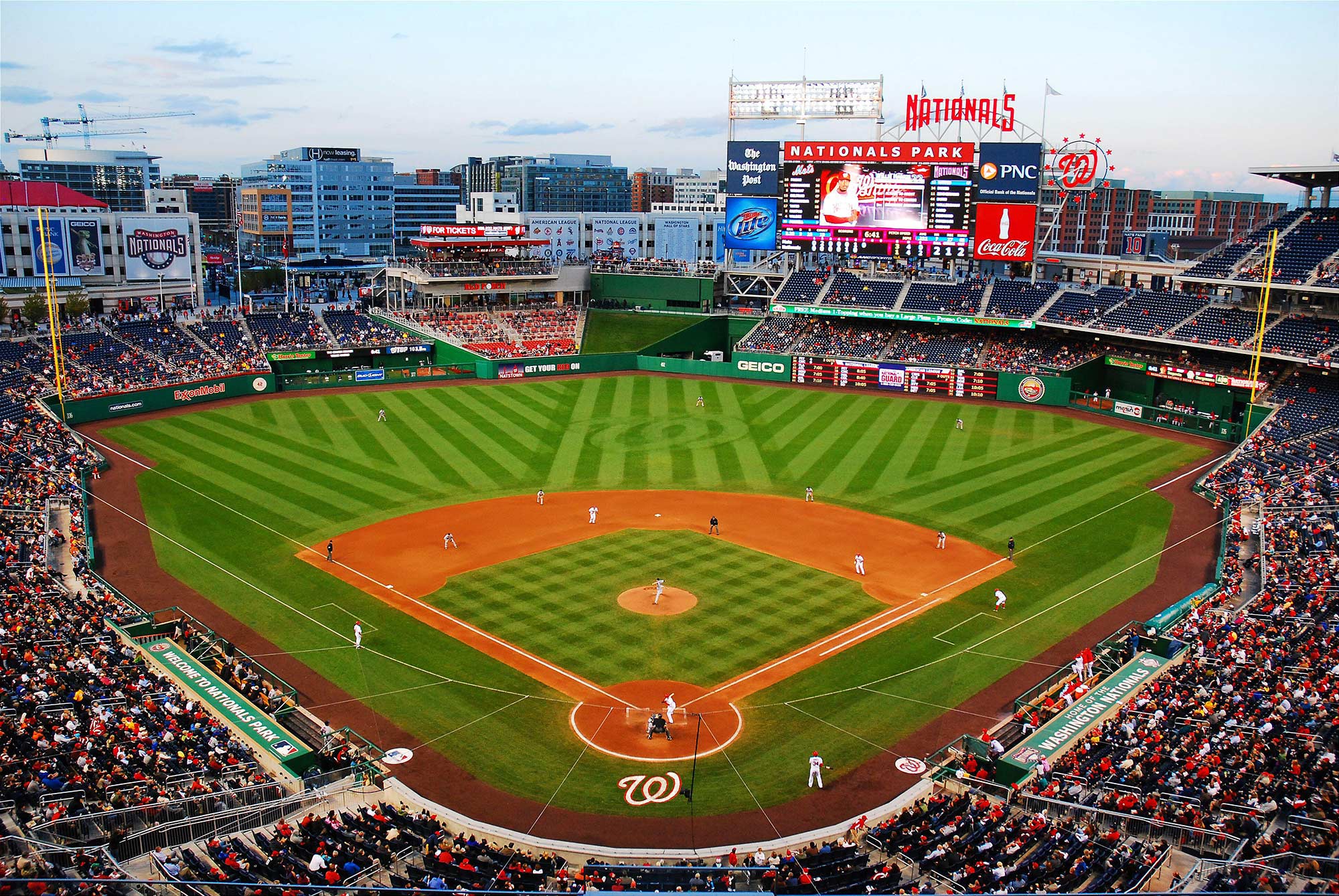
Forget the football field or baseball diamond. For DC sports fans, the most exciting action in 2023 will happen in the owner’s box.
Commanders owner Dan Snyder and the Lerner family, who own the Nationals, are both exploring potential sales, which means Washington’s NFL and MLB teams could both be under new management. And that—as much as anything that happens on the field—would be worth cheering for.
Granted, the Nats enjoyed a long, entertaining, competitive stretch under the Lerner regime, culminating in a 2019 World Series victory. However, the family’s refusal to pay for late-night Metro service left fans marooned at the ballpark after extra-inning playoff games (unless private companies or Metro footed the bill and bailed them out). In recent years, a similar reluctance to pay top dollar for players has meant watching a series of stars—including Bryce Harper, Juan Soto, and Anthony Rendon—depart for better deals elsewhere.
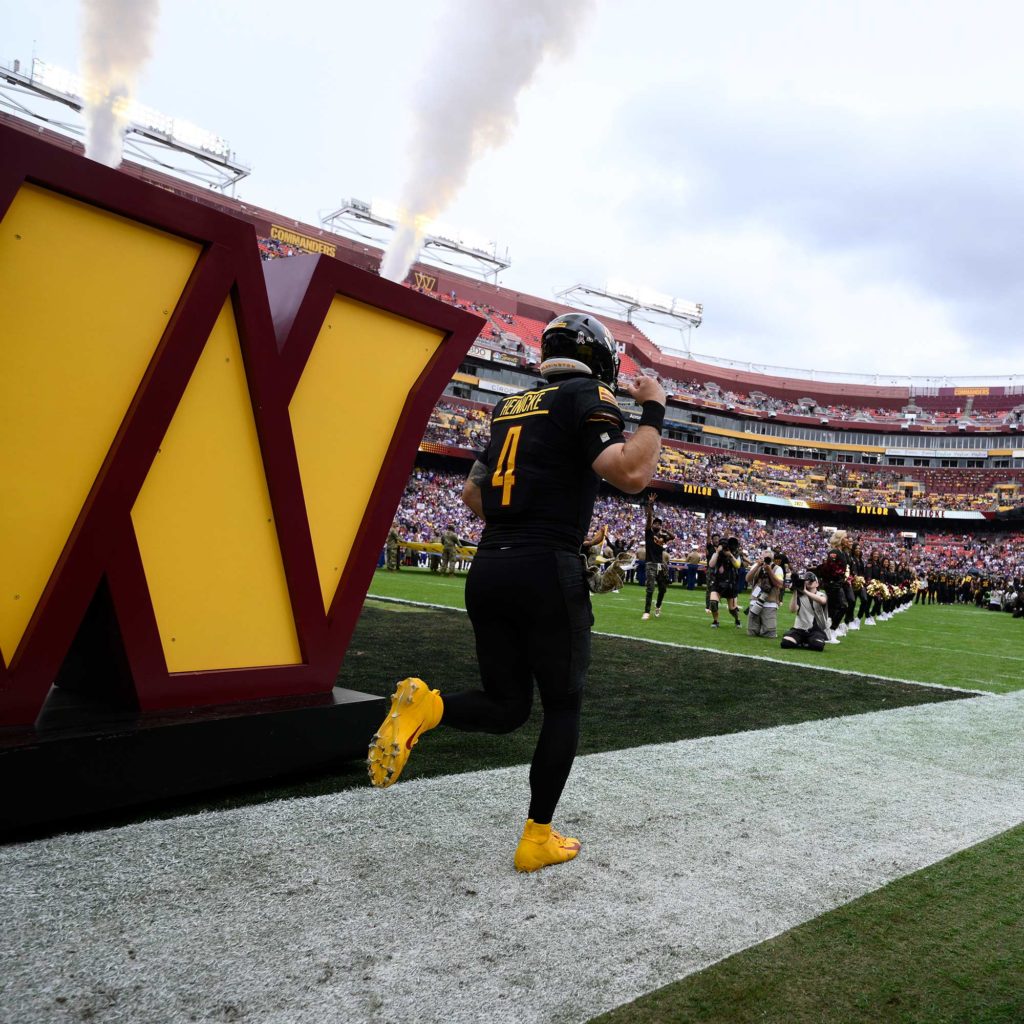
By contrast, Snyder’s 23 full seasons with the Commanders have been downright calamitous. Despite spending freely on big-name players and coaches, the team has been defined by losing and chaos. Off the field, Snyder’s persistent pattern of noxious behavior—suing a local newspaper, presiding over an allegedly toxic workplace culture, reportedly using private investigators to compile information on other NFL owners, potentially hoodwinking those owners and local fans out of ticket money—has made him a regional villain, badly eroding support from a fan base that arguably was once the league’s most enthusiastic.
So who might replace Snyder and Lerner? The apparent Nats front-runner, Ted Leonsis, is a familiar face. He already owns the Capitals, Wizards, and Mystics, and his NHL and WNBA franchises have won championships during the past decade. The Wizards haven’t been nearly as successful, but with all three teams, Leonsis has been patient with his front offices and willing to invest big bucks in star players such as Alex Ovechkin. He also has cultivated an outgoing and accessible public persona, ingratiating himself with fans in a way the Lerners never could.
As for the Commanders, the most buzz surrounds Amazon founder Jeff Bezos, who certainly can afford a potential $6 billion–plus asking price and already has ties to the NFL (through Amazon’s Thursday Night Football deal) and the DC area (through owning the Washington Post, a 27,000-square-foot mansion in DC, and, with his new Amazon HQ2, a sizable footprint in Northern Virginia). Unlike with Leonsis, it’s hard to know what to expect from Bezos or another first-time sports owner. What’s far more certain is that the Commanders and Nationals both present an opportunity not only to own an extremely rare and valuable asset but also to become a local hero simply by being fan-friendlier and less alienating than the previous regimes. The bar is low! Let’s hope whoever ends up with our teams can clear it.
—Luke Mullins
Amazon’s HQ2 Is Opening for Business
For locals, HQ2 means not just more jobs and investment, but more retail, recreation, and (hopefully) affordable housing
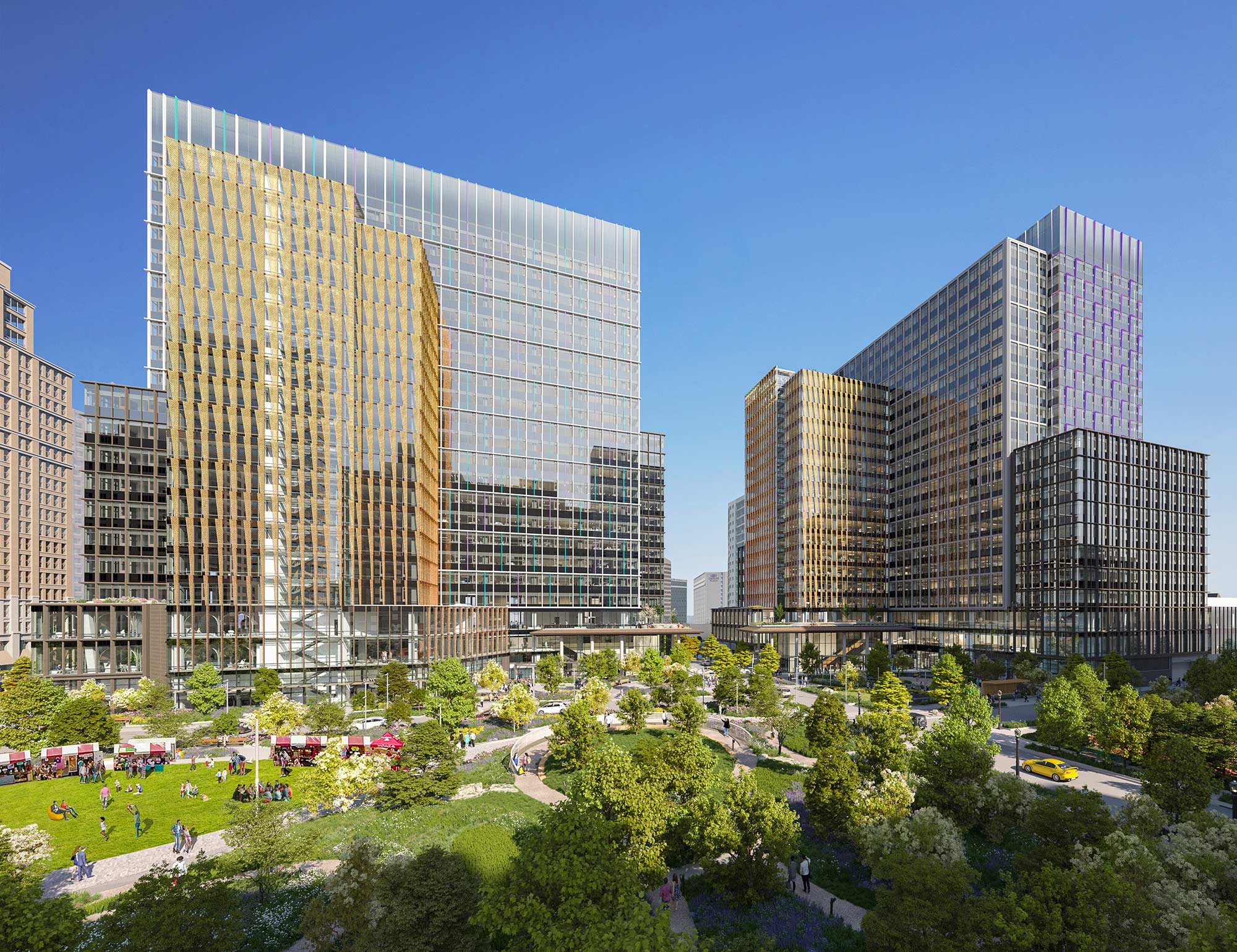
This year, Amazon is slated to finish construction on Metropolitan Park, the first phase of its HQ2 in National Landing. The site will include two office towers with 67,000 square feet of retail (say hi to neighborhood newcomers such as District Dogs, South Block, and cycling-and-HIIT studio Hustle) and a revamped park. Its second phase, PenPlace, is more ambitious. Expected to be finished in 2025, it will include three buildings, about 95,000 square feet of retail, a childcare spot, a new location for Arlington Community High School, 2.5 acres of public space, walking and bike paths, and the much-discussed poop-emoji-shaped Helix building.
|
More Amazon changes coming to Northern Virginia, by the numbers: |
|---|
$2 billion–plusAmount Amazon is investing in HQ2 |
$147 millionAmount Amazon recently committed to affordable housing around DC |
8,100Number of residential units coming to National Landing |
4 millionSquare feet of office space Amazon will occupy by 2031 |
505,080Square feet of retail coming to National Landing |
5,000Current number of HQ2 employees |
25,000Number of jobs Amazon will bring to HQ2 within the decade |
13Number of feet by which the Helix’s height originally exceeded FAA regulations (after a study, it was deemed not a risk) |
—Mimi Montgomery
The DC Waterfront is Awash in New Reasons to Visit
As the Wharf puts on its finishing touches, more development is set to break ground
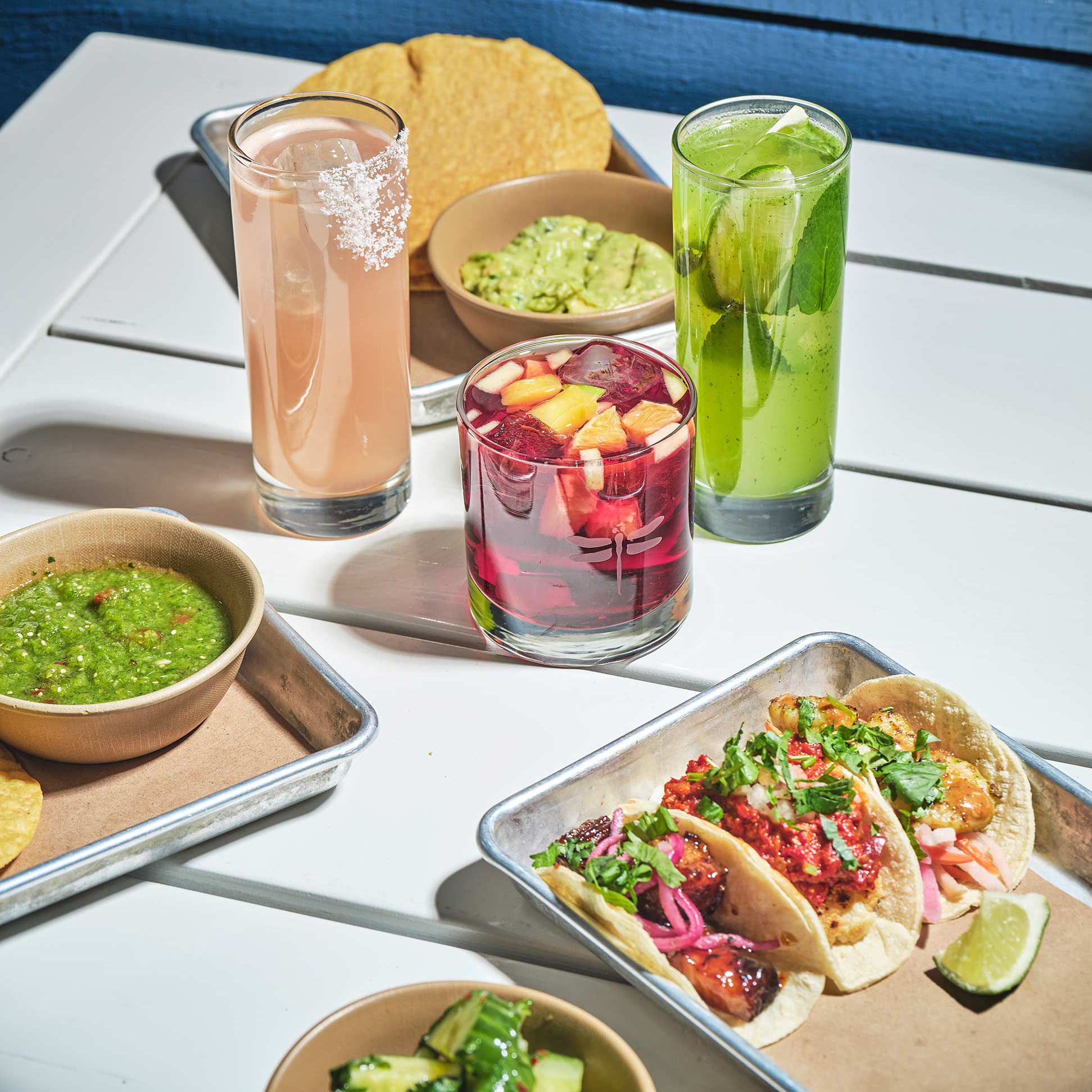
The city’s southern waterfront is changing. While the Wharf officially capped its phase-two expansion last year, the $3.6 billion development is still rolling out tenants. Come 2023, expect newcomers including the New Orleans–style brunch spot Milk & Honey and an outpost of the New York Mediterranean restaurant Limani. Yes, there are gripes to be made about Wharf prices ($36 for three-hour parking? $12 million for a condo? Marina slips for superyachts?), but it’s not all fancy-schmancy—more reasonably priced venues such as Lucky Buns and Bartaco are opening, too. Plus, the destination’s public amenities—parks, gathering spots, and the mile-long walk along the water—are always free.
Additional waterfront news for this year: Construction will break ground on both Buzzard Point’s $200 million mixed-used development, Parcel B, and the $90 million 11th Street Bridge Park over the Anacostia River.
—Mimi Montgomery
All-Glowed-Up Renovations
Following needed redos, three beloved local institutions are nearly ready to be re-enjoyed
National Museum of Women in the Arts
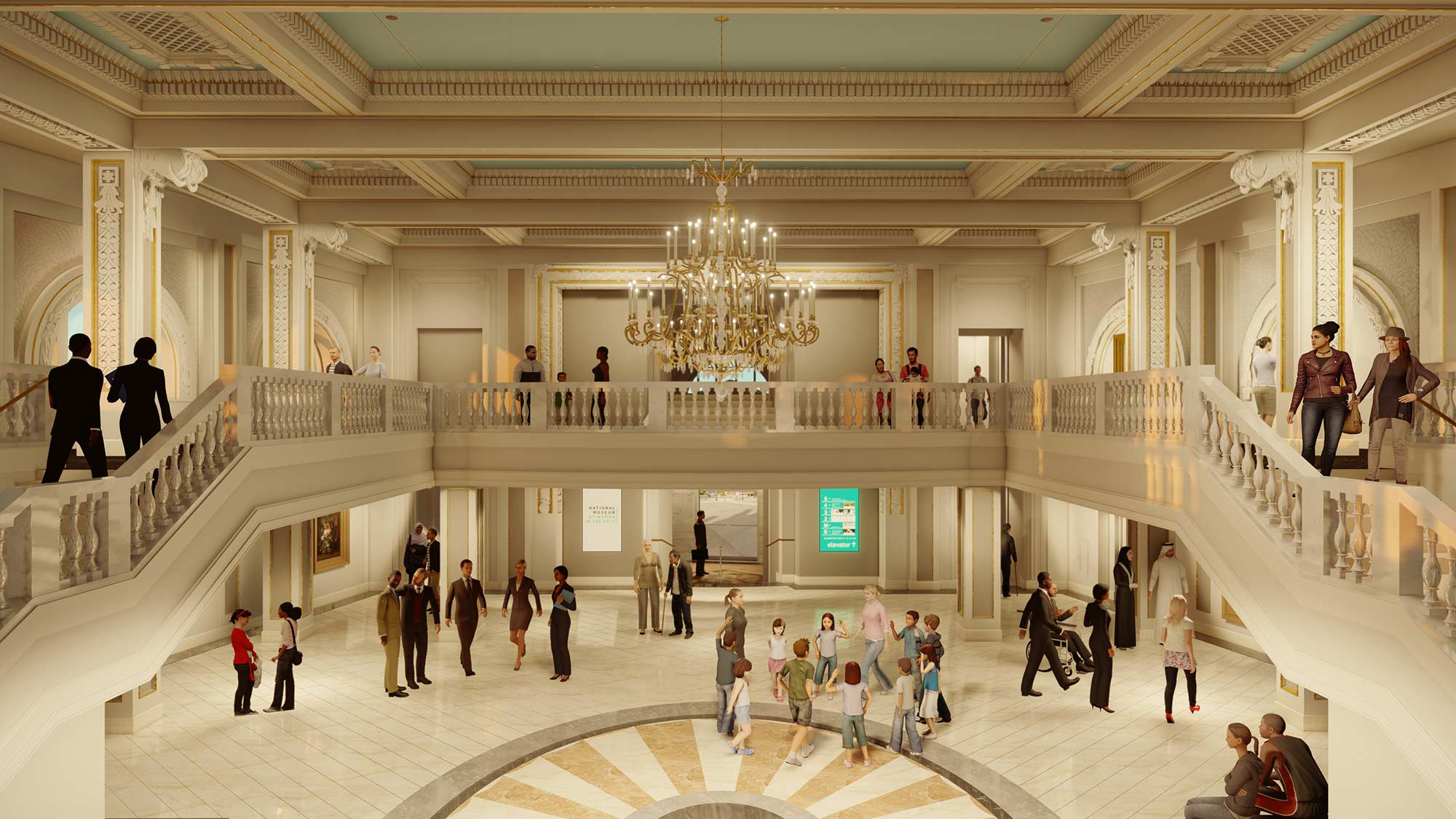
The $67.5 million renovation of this museum—closed since August 2021—was a long time coming, says communications director Amy Mannarino. The 1908 building, a former Masonic temple that’s on the National Register of Historic Places, hadn’t had a full overhaul since 1987, when the museum debuted. “A lot of things have progressed since then,” says Mannarino, “so [we wanted to ensure that] we’re up to date in terms of energy conservation, digitization, and museum accessibility, while also preserving the historic outer shell of the building.” Here’s some of what you can expect when it reopens in the fall: larger gallery spaces with improved interactive technology, upgraded sound and seating in the 200-seat Performance Hall, better lighting, an expanded museum shop, and greater accessibility. A new “learning commons” will feature a studio for events and workshops, as well as a library and research center with a reading room.
Folger Shakespeare Library
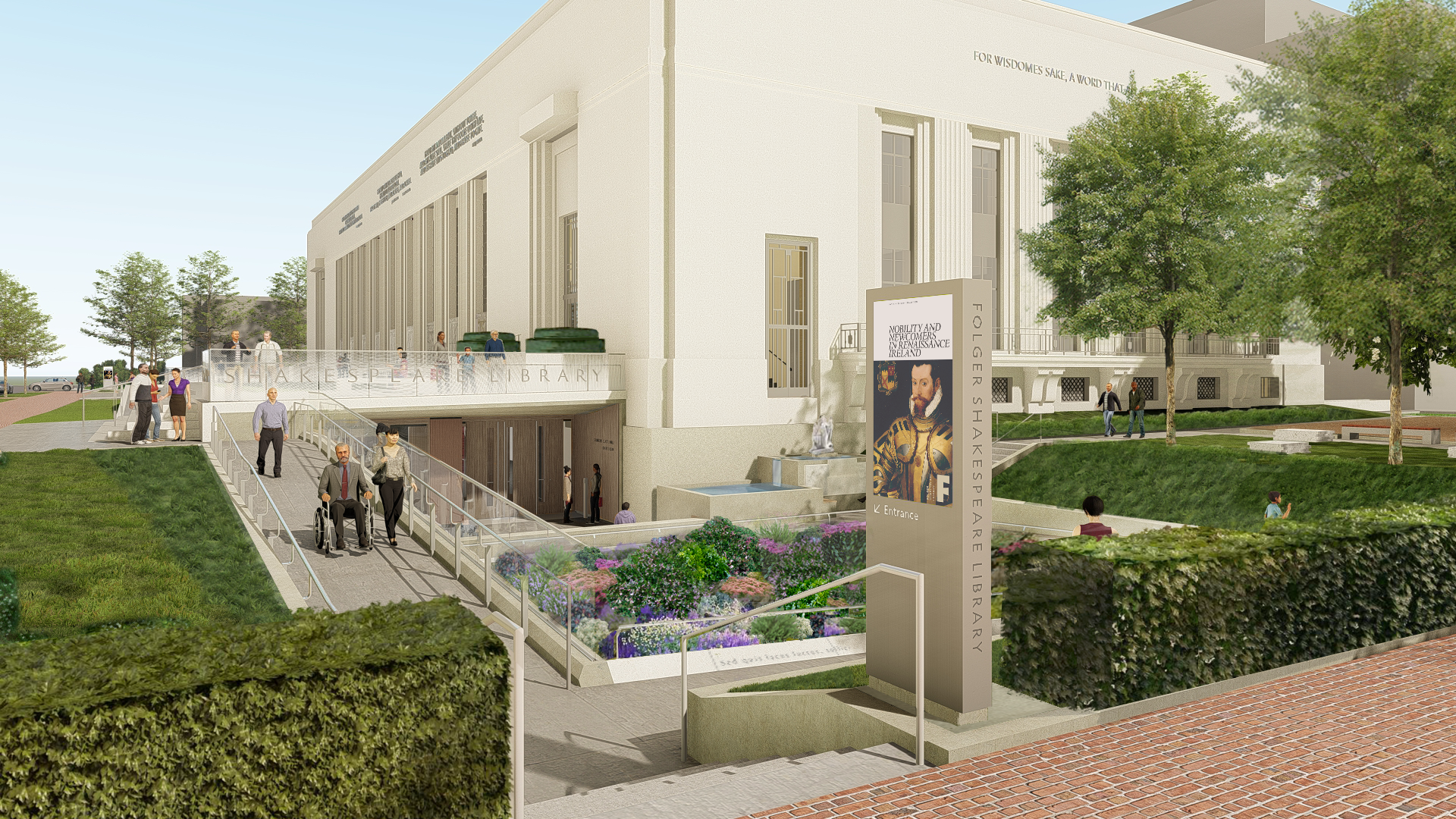
When the Folger library opened in 1932, the marble-white building had been designed to blend in with Capitol Hill. But it did that job too well—passersby often assumed it was off-limits to the public. So in 2018, when the library began a $72 million renovation—set to be unveiled in fall 2023—one of its goals was to “signal, even from the street corner, that this is a place meant for you,” says Michael Witmore, who heads the institution. To achieve that goal, the library has added a 12,000-square-foot public pavilion under its front lawn, adjoined by two new entry plazas that are connected by landscaped walking paths and gardens. Indoors, two large exhibition halls will host temporary and permanent exhibits, including the library’s extensive collection of rare books, while a new education laboratory will be the site of workshops and discussions.
Frederick Douglass House
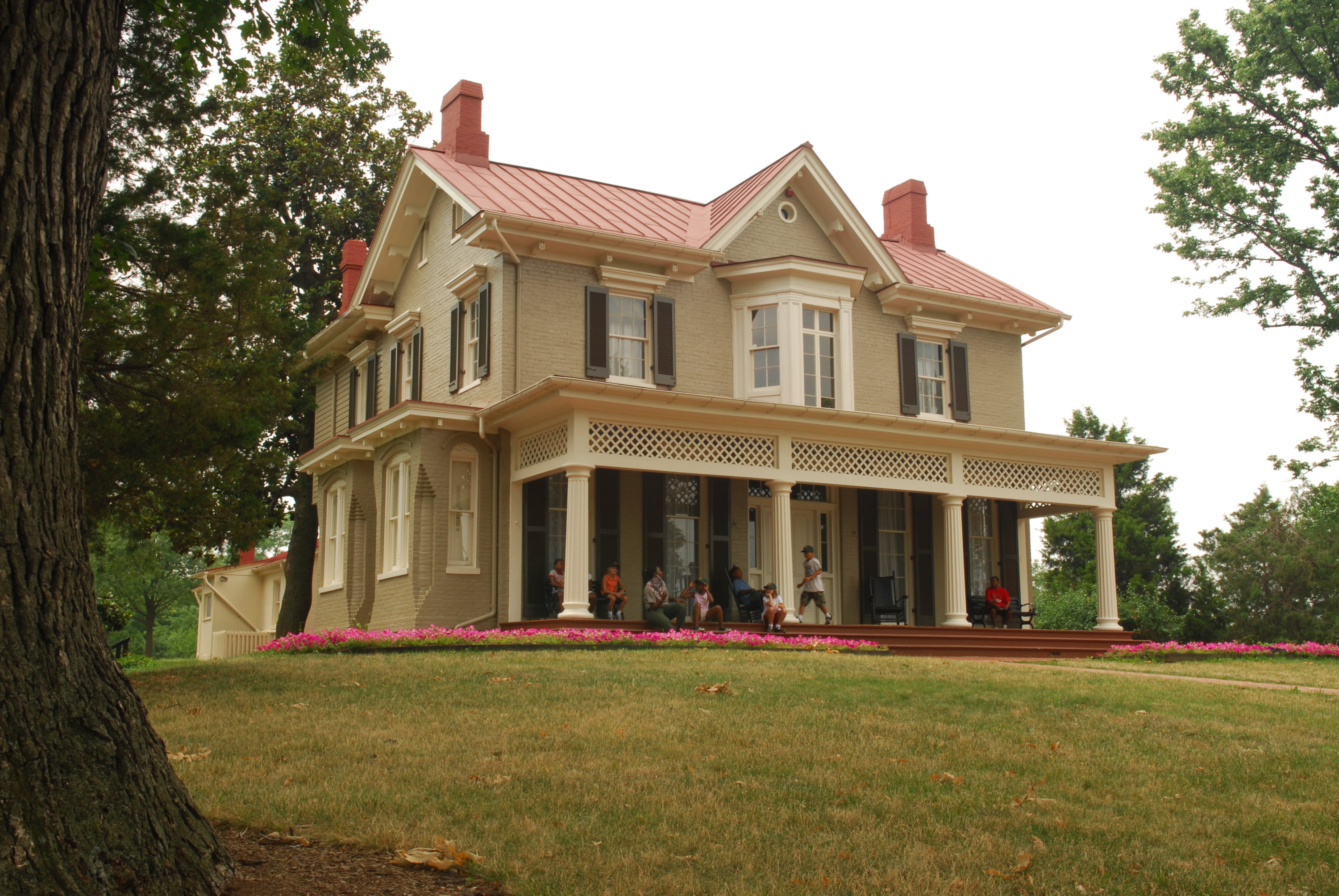
The National Park Service closed the Frederick Douglass House last July to connect new heating, ventilation, and air-conditioning systems to the historic site’s original vents. Though the roughly $900,000 changes won’t be noticeable to visitors, they’re critical to preservation, says Park Service spokesman Sean P. McGinty. Fluctuations in humidity pose a threat to the 19th-century artifacts and plaster walls inside the abolitionist’s former home on Cedar Hill. As for more visible changes, the visitor center will have a refreshed look with new carpet, ceiling tiles, and merchandise. While the house itself won’t look much different when it welcomes visitors back in March—that’s the point of historic preservation, after all—it will be nice to have the Anacostia gem open again.
—Jessica Ruf
The National Zoo’s Reimagined Bird House
A beautiful new look—and species-saving mission—make it a must-visit
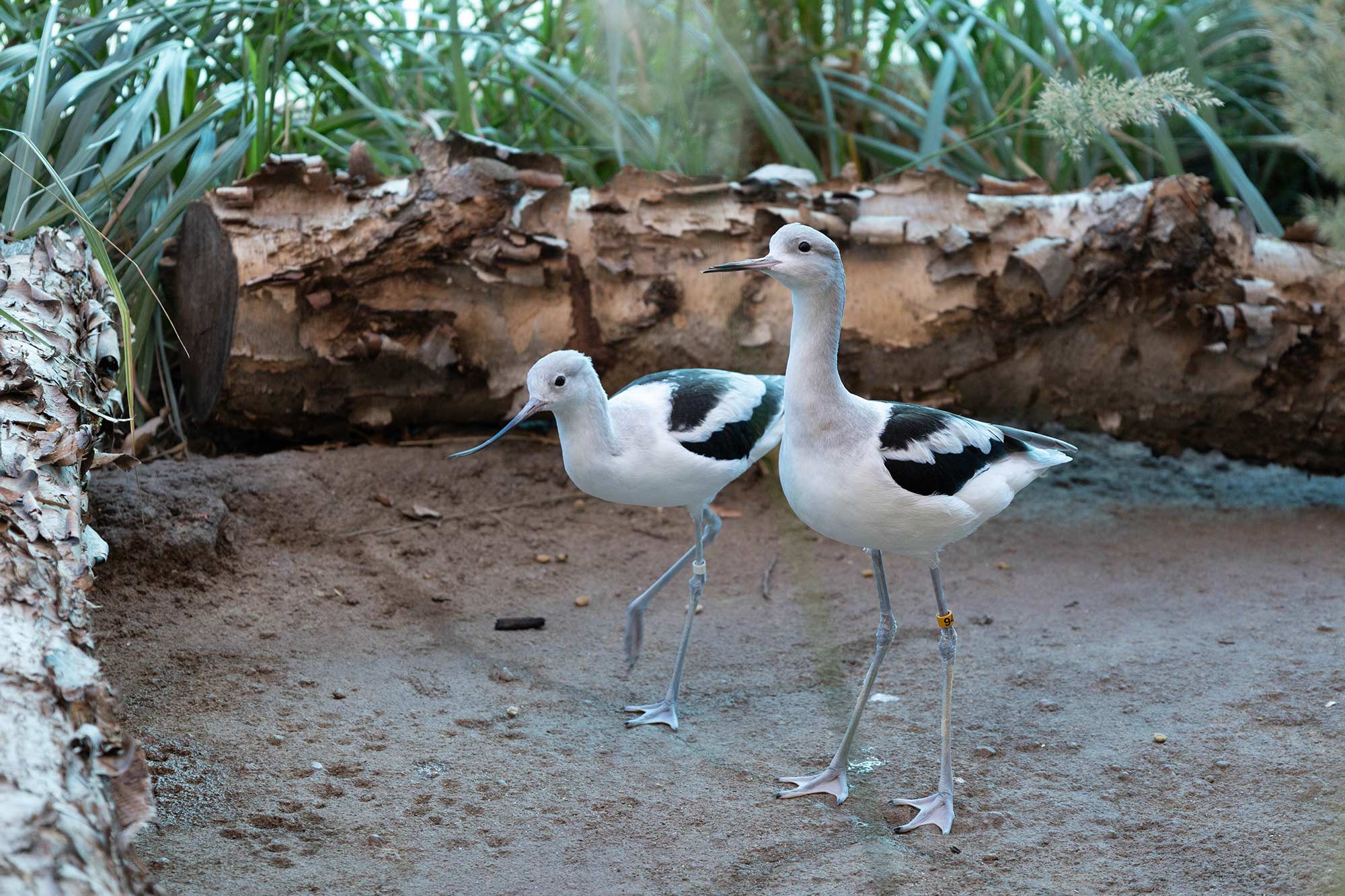
In March, the National Zoo is slated to reopen its Bird House, now with an unusual focus: migratory birds of the Americas, the kinds that might land in your backyard. Typically, zoos exhibit rare birds from far-flung locales—toucans or emus, say—but not ordinary native species like sparrows, orioles, and ducks. Perhaps there’s a reason for that: Why trek to the zoo to see birds that are already at your feeder? Allow me to explain why you should.
For one, after years of renovation, the new Bird House is gorgeous. Flanked by gardens of native plants, it will have light-filled aviaries and bird photographs displayed on a monumental scale. Unlike the old exhibit, the birds won’t live behind glass—they’ll mingle with humans, roaming the walkways and flying overhead. During my tour in November, the birds hadn’t moved in yet, but entering the Bird House still felt like being in nature. The aviaries mimic various migratory-bird habitats, teeming with plant life under illusionistic painted skies.
Behind the scenes, the new Bird House has a radical goal: to learn to propagate bird species that have never before lived in captivity, with an eye to preventing future extinctions. For Sara Hallager, the zoo’s curator of birds, the California condor was a cautionary tale. Back in the ’80s, the condor population was crashing, so scientists brought the remaining birds into captivity. “But there was a lot of last-minute scrambling to figure out all of the logistics,” Hallager says, in terms of how to care for them. With bird species declining across the globe, near-extinctions may become more common, even for species that seem ubiquitous now. By bringing such birds into captivity and learning to care for them now, the zoo will develop a plan for how to keep these species alive in the future, should they ever come under threat.
This is pioneering work. “Nothing on this scale, as far as we can tell, has been done anywhere in North America or in the world,” Hallager says. And the novelty of the work has brought challenges, such as stocking the Bird House with species that exist only in the wild. “I can’t just call up a zoo and say, ‘Hey, send me a pair of yellow-breasted chat,’ because no one’s got them,” she says, so the zoo’s yellow-breasted chat were captured in a Maryland park. Many of the birds on display will be wild-caught, or the offspring of wild-caught birds.
Sure, some visitors may miss the non-native birds that previously lived at the old Bird House and have, for the most part, relocated to other zoos. “People come to the zoo knowing everything about the emu or something and they don’t know anything about the birds in their backyard,” Hallager says, “but they should.”
Our region’s birds are diverse and spectacular; watching them preening and chattering and flitting around their habitats, it’s hard to ignore the threats they may face. For Hallager, that’s the takeaway: “Birds here in our country are having major issues, but I want people to appreciate them and understand that we can make a difference.”
—Sylvie McNamara
Don’t Call It a Comeback
It wasn’t goodbye, just “see you later”—after shutdowns and closures, these three enterprises could make their return this year
The Original 9:30 Club
For anyone who missed out on a show at the music venue’s 930 F Street location—or is looking to relive the glory days—a replica of the old space is opening behind the current club in Shaw. The clone will host intimate shows, as it did in the ’80s, sans the nostalgic scent of cigarettes and disinfectant.
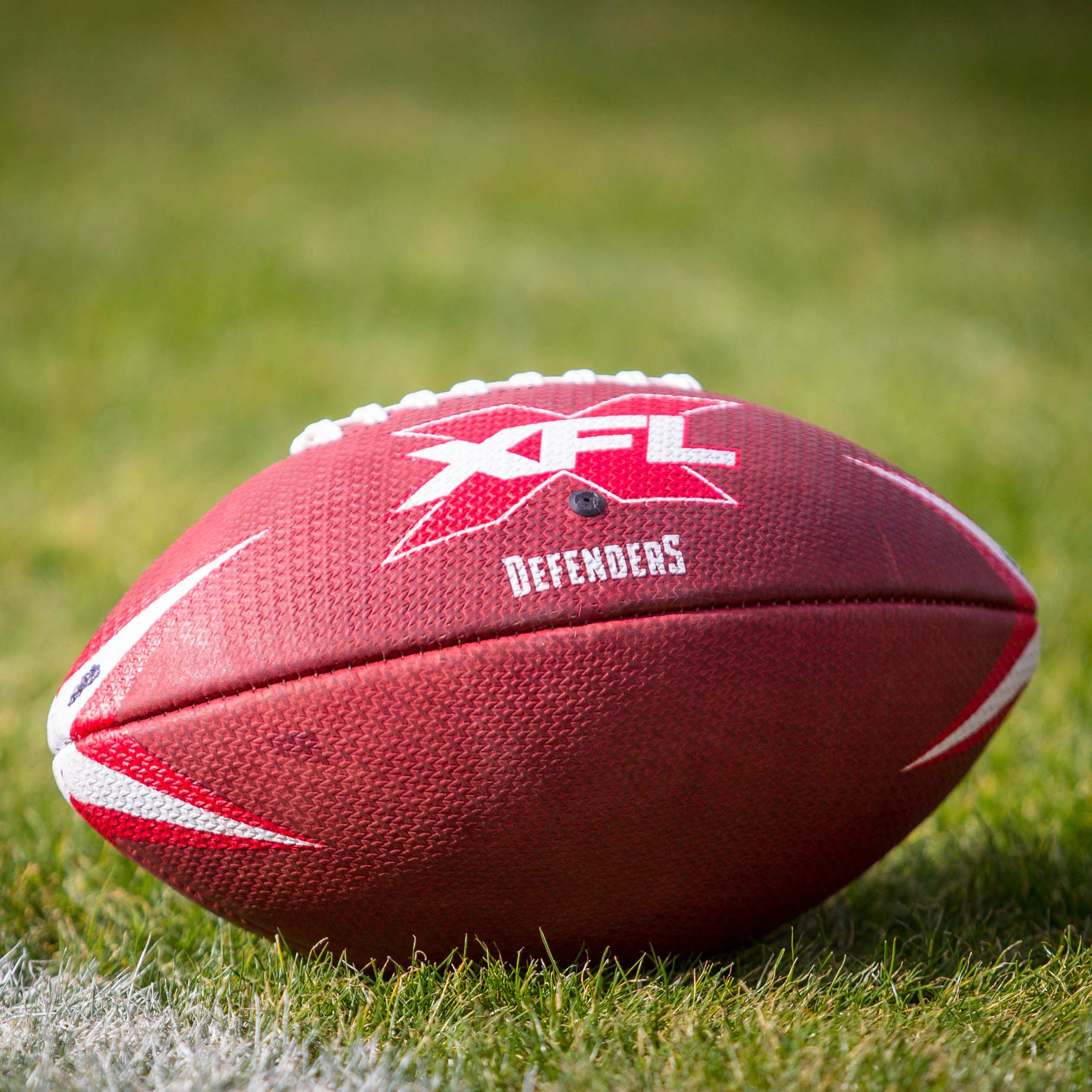
DC Defenders
The alternative football association XFL shuttered two months into the 2020 season, taking the local team—and fans’ famous Beer Snake—with it. Now that the league is coming back in February, DC’s players will retake Audi Field under the same name, providing an alternative to the beleaguered Commanders.
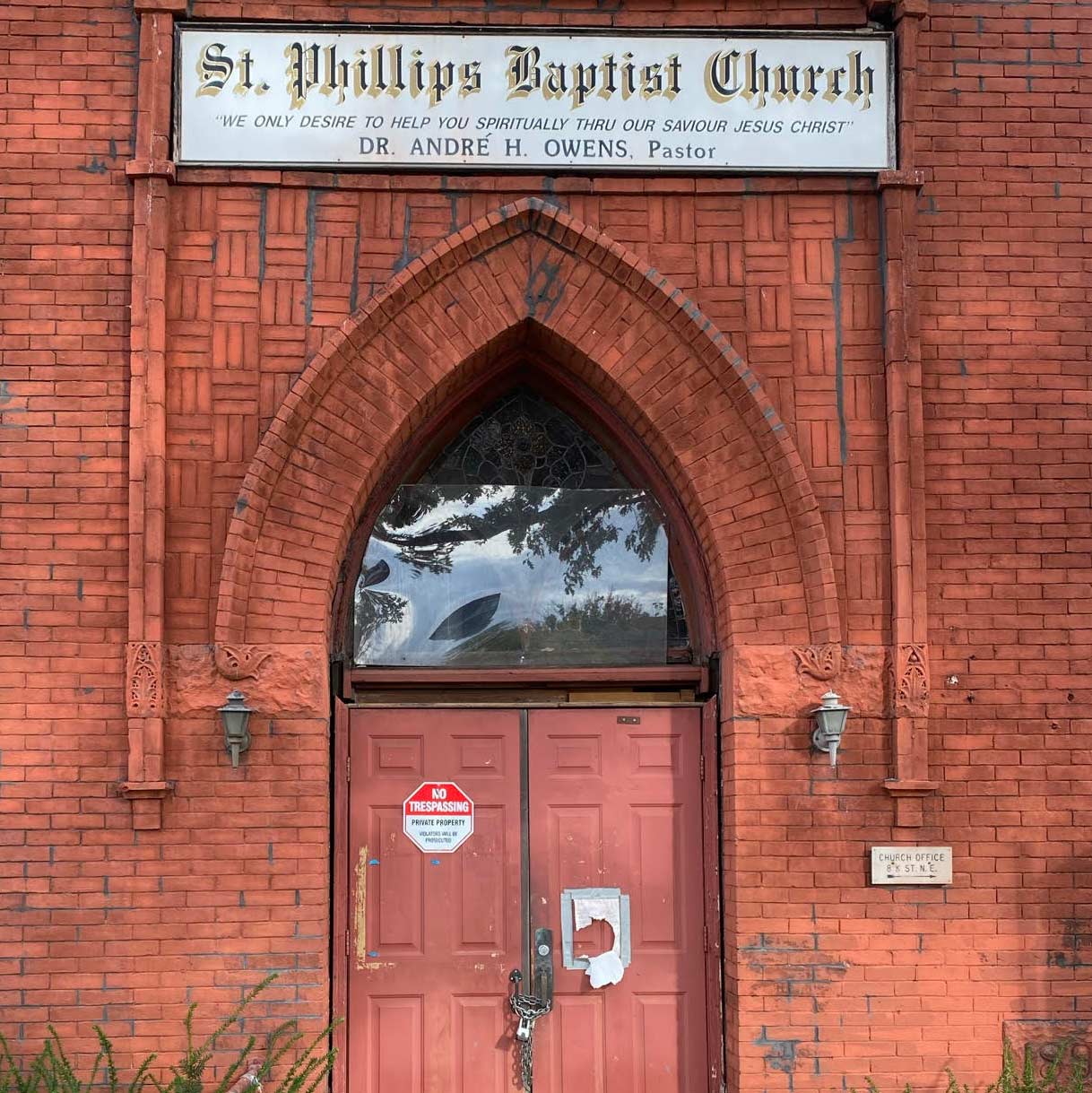
Town Danceboutique
Shaw’s beloved gay club closed in 2018, leaving a go-go-dancing gap in the nightlife scene. However, the owners are opening a new destination—informally dubbed Town 2.0—that, after construction is completed, will bring the original spot’s DJs and drag shows to the former Saint Phillips Baptist Church in NoMa.
—Daniella Byck
Fresh Faces
November’s midterms resulted in some surprising wins, including a few folks who could make politics around here more interesting
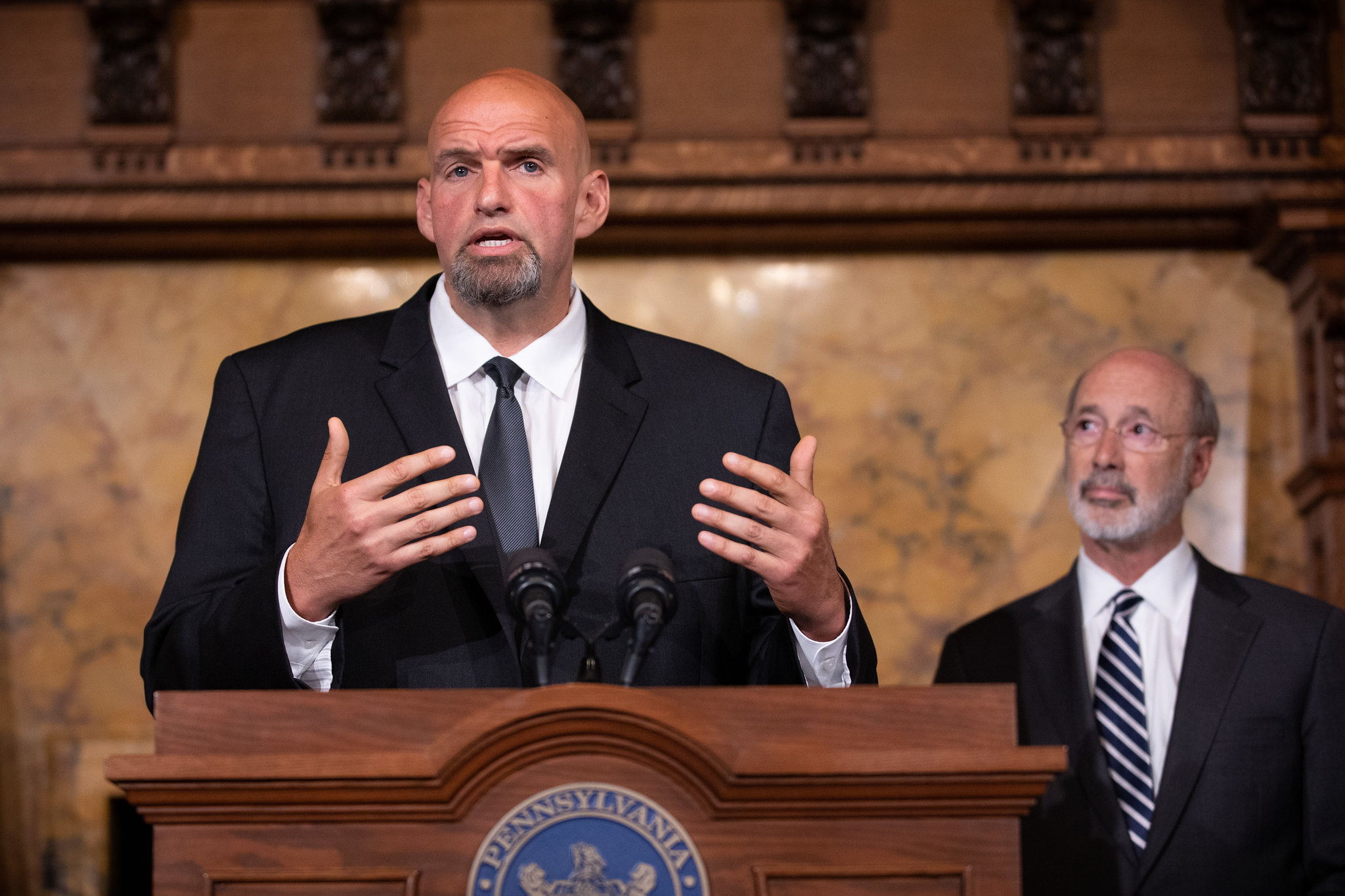
John Fetterman
It will be hard to miss the six-foot-nine, tattooed, hoodie-wearing Pennsylvania senator (who was once called “America’s coolest mayor”) and his equally badass wife, Gisele, if they go out and about in DC.

Catherine Read
Read—a longtime civic activist, a decades-long resident of Fairfax, and a graduate of George Mason University—is the first woman to be elected mayor of the City of Fairfax.
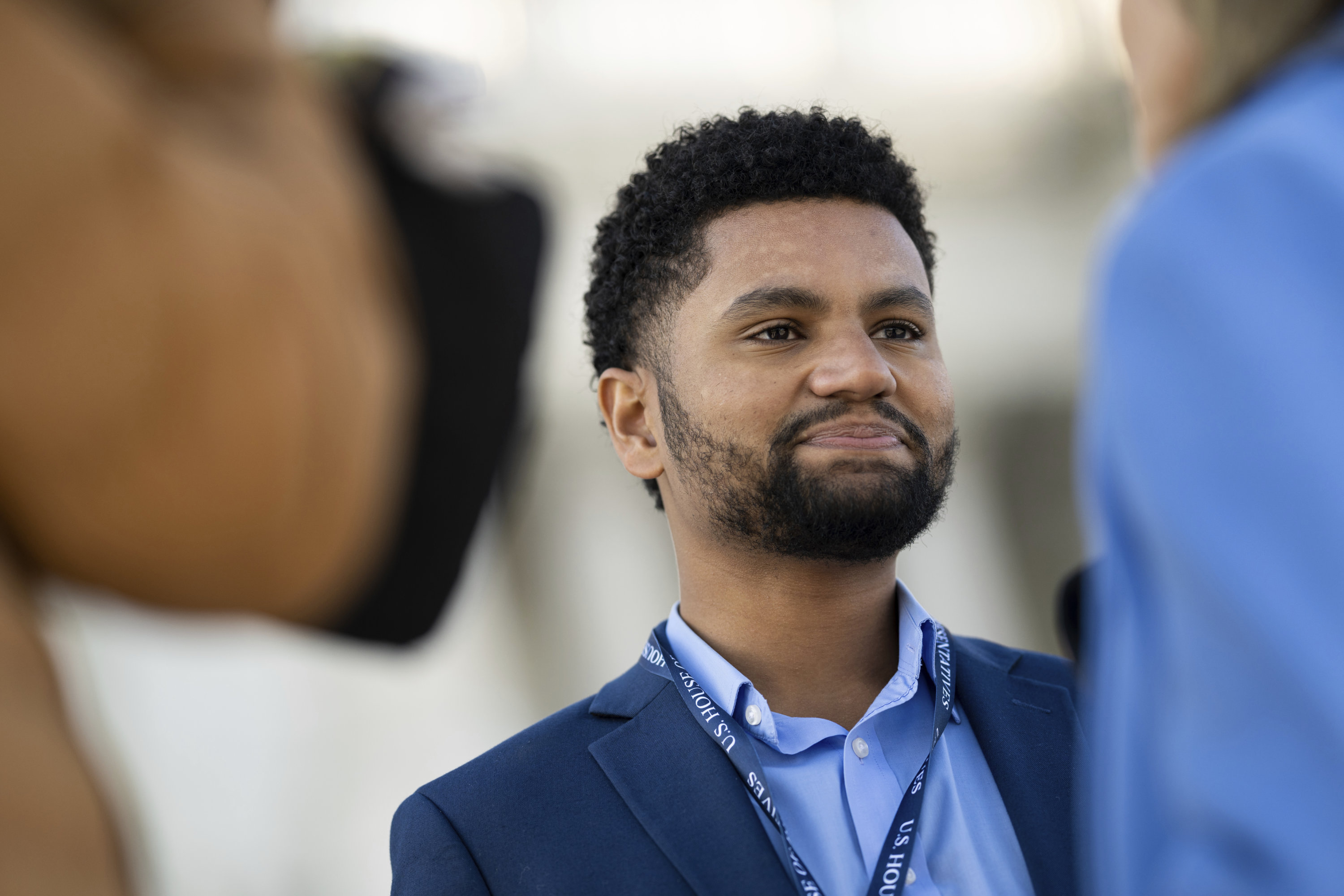
Maxwell Frost
After becoming the first Gen-Zer elected to Congress, the Florida rep celebrated with a concert at the Anthem, during which the 1975 gave him a shout-out. The music lover may spend his free time jamming out at our beloved music venues.
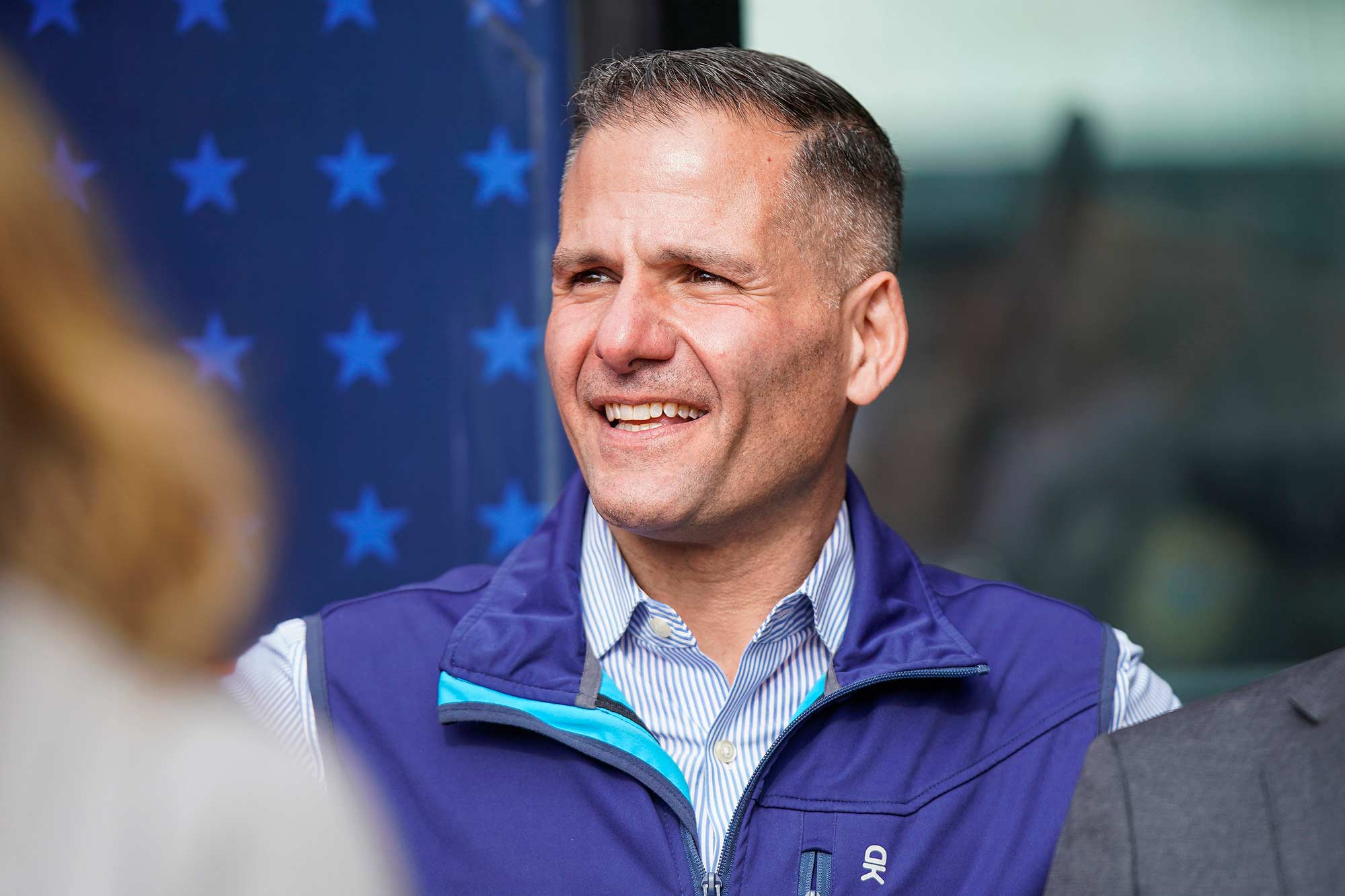
Marc Molinaro
A moderate Republican, Molinaro may be a rare voice of bipartisanship in the House. He’s former mayor of the village of Tivoli, New York—elected at age 19.
—Damare Baker
Rude VIP Diners Will Have to Clean Up Their Acts
Restaurateur Keith McNally is coming to town

New York restaurateur Keith McNally is set to open two upscale bistros in the Union Market District next year: an outpost of Minetta Tavern and another location of Pastis, his collaboration with Le Diplomate hitmaker Stephen Starr. But we’re looking forward to so much more than his famed Black Label burger: chiefly, McNally’s unvarnished Instagram commentary calling out the rich, famous, and poorly behaved—something Washington desperately needs.
McNally went viral this fall after banning talk-show host James Corden for allegedly abusing the staff at the buzzy SoHo brasserie Balthazar. In one incident, the comedian reportedly berated a server because a bit of egg white was mixed into his wife’s egg-yolk omelet. The saga seemed to continue for multiple news cycles, ending with Corden apologizing on The Late Late Show and McNally unbanning him but then (maybe) rebanning him.
If you follow McNally, you know this is the kind of dish you can expect on the regular. The occasionally controversial restaurateur famously put magazine editor Graydon Carter on blast after the “fancy Fucker” no-showed on a lunch reservation for 12. McNally is constantly name-dropping—Leonardo DiCaprio at table 13 at Minetta, Cindy Crawford at table 66 at Balthazar. He frequently publishes his managers’ end-of-shift reports, chock-full of juicy details about cancellations, complaints, comps, big names, big spenders, and bad tippers. Despite the potential breaches of privacy, the VIPs keep coming back.
This is the kind of dining transparency we just don’t have in Washington, despite the city’s own inflated egos, server-stiffers, and tableside tyrants—some of them likely shaping policy and the national conversation. This is also the town of checks and balances. So, Keith, please take on the capital’s power crowd next.
Cordens of Congress and C-SPAN: You’ve been warned.
—Jessica Sidman
Three Things We’re Not Excited About
A trio of items that fill us with preemptive regret
1. Another year of taxation without representation.
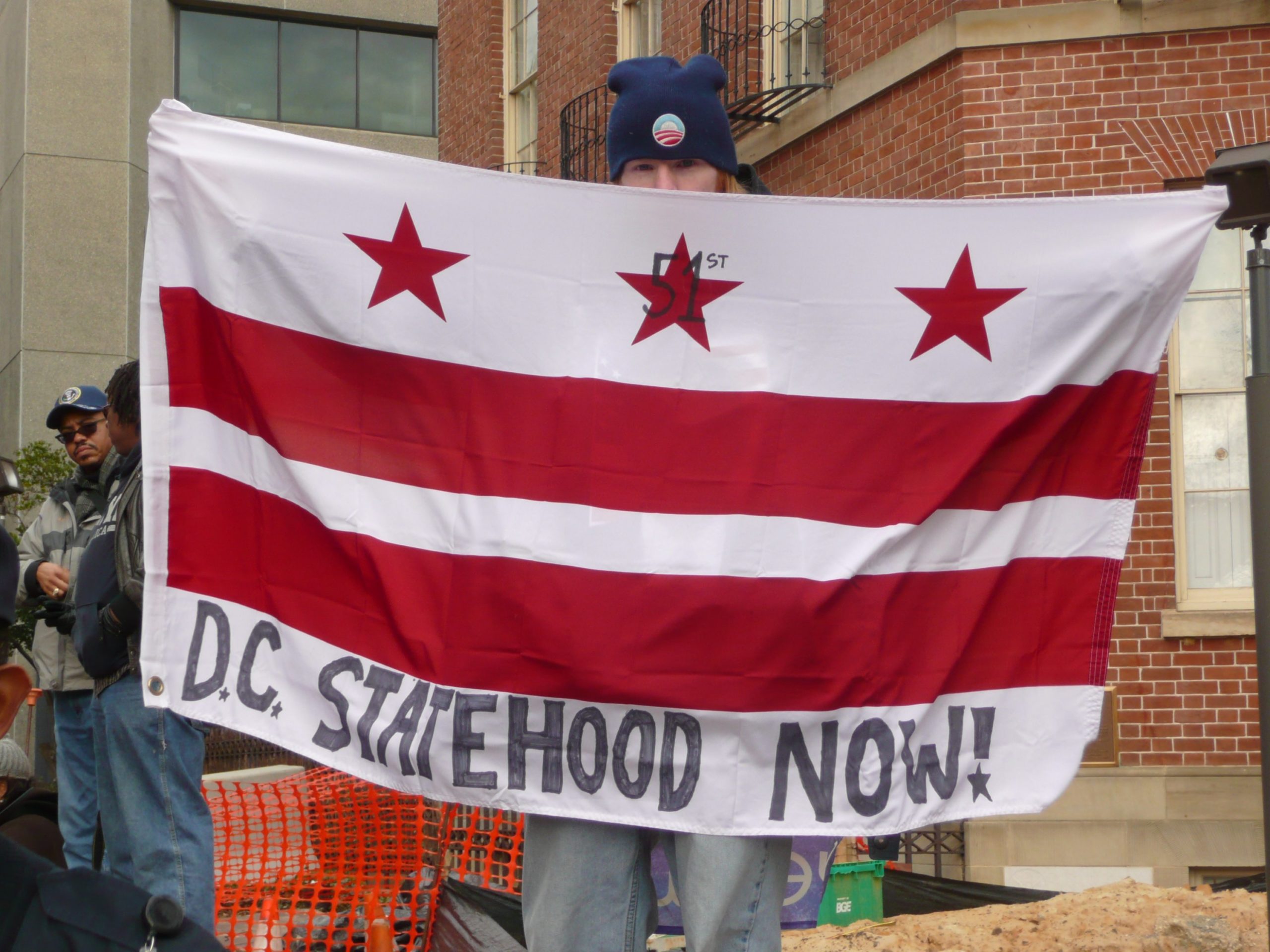
Republican control of the House means DC statehood is once again dead in the water. Actually, who are we kidding? Democrats hadn’t exactly made it a priority, either. While the people of our city are disenfranchised, the Dakotas enjoy a whopping four senators. Life isn’t fair, but our government should be.
2. RFK Stadium’s goodbye.
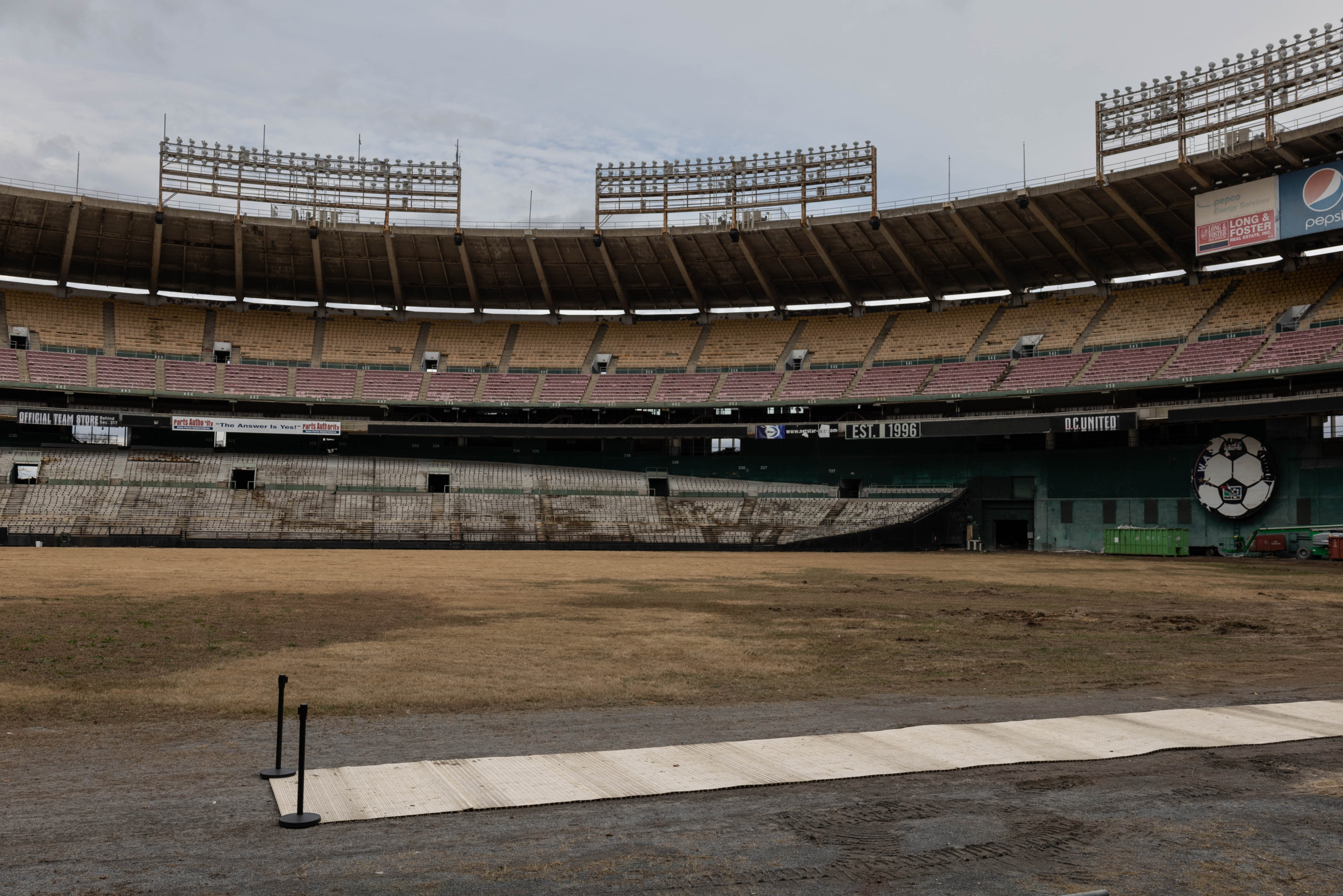
Don’t get us wrong: The venerable stadium is long past its expiration date. It needs to go. Problem is, it’s scheduled to be torn down . . . and not blown up. That’s a shame. Stadium demolitions are awesome: safe, controlled, and totally jaw-dropping, the stuff of Hollywood CGI made real. Why can’t we have nice things?
3. Taylor Swift, live in concert.
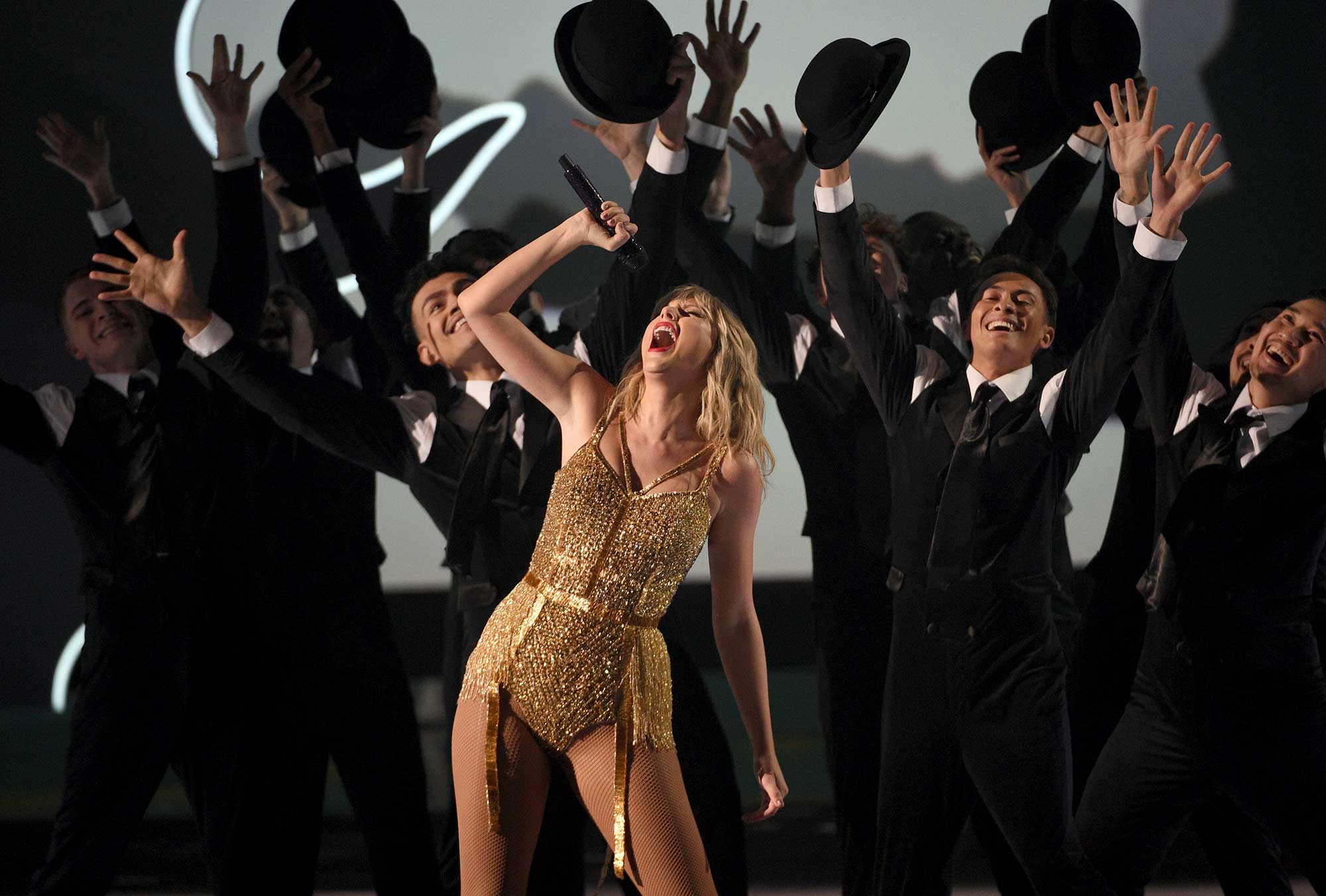
We get it, Taylor. You’re not bringing the Eras Tour to FedEx Field. And really, that’s fine. We don’t need you—in fact, we never wanted you in the first place. We have monuments and museums and half-smokes and the National Zoo pandas. We’re good. You can stick to LA and Philly and—wait, seriously, Glendale?!
—Patrick Hruby
This article appears in the January 2023 issue of Washingtonian.
